Wondering how to choose light fixtures for your home? Read this post to learn our expert design tips for curating lighting in your home.
This post will teach you how to choose the best lighting for an open floor plan, mix and match lighting styles, and curate cohesive lighting in your space.
You’ve come to the right place, read below to learn all about selecting lighting for your home!
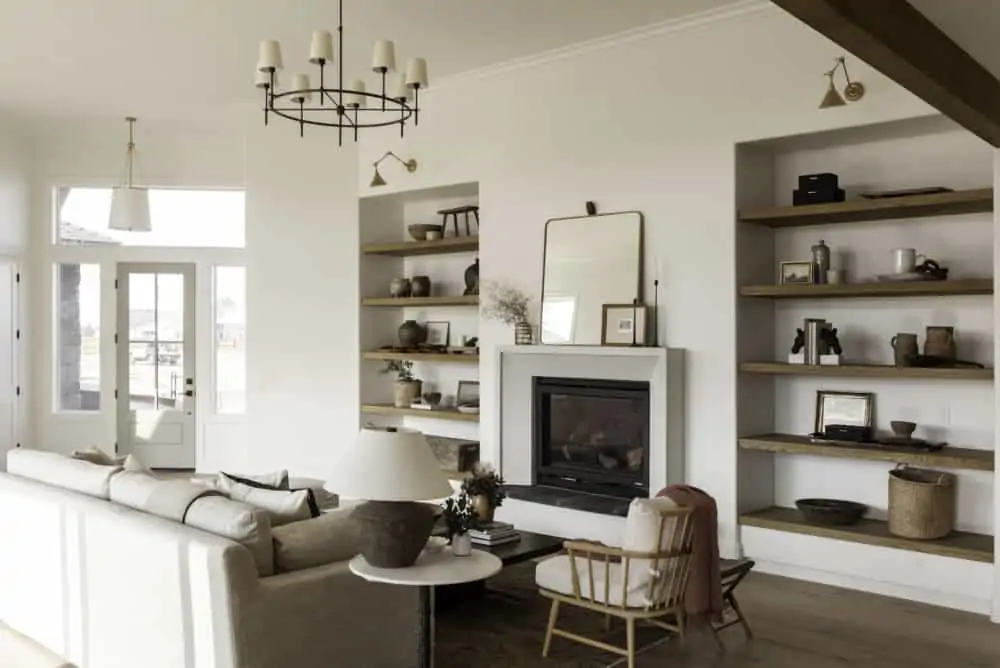
How to Choose Light Fixtures
As an interior designer, lighting is one of the most important elements of design! If you need some guidance to gain confidence when choosing light fixtures, I’m sharing my best tips so that you can easily select all of the lighting for your home!
In this post I am sharing our tips for choosing cohesive lighting for your home. Whether you’re working on a new build, remodel, or simply want to update some existing lighting, I hope you find this post helpful!
The importance of lighting
A Necessity: Every home (and building) will have many sources of light out of pure necessity. While some people may opt for recessed lighting – I suggest you make selections based off of design, ambiance, and overall aesthetic!
Ambiance: Light will create mood and ambiance in a space. It’s very important to select a variety of light sources at varying heights.
Overall Style: Lighting design aids in overall aesthetic to a space. It is the jewelry of a room!
Designer tip: In addition to the overall effect lighting has on a project, it’s also something that needs to be considered first during construction (the wiring comes right after demo!). Make sure to select lighting at the beginning of the project in case special wiring is required for your desired fixture.
This is a part of our series diving into creating cohesive design. Consider this series an interior design 101 for you to gain confidence in designing your own home! If you’re stuck on design, you can get even more design tips by checking out my post about selecting kitchen backsplash or shopping for furniture like an interior designer!
If you need more personalize support, we offer design services nationwide for projects of all sizes. Whether you need a custom lighting plan or full service design, we can help! Please inquire for our availability here.
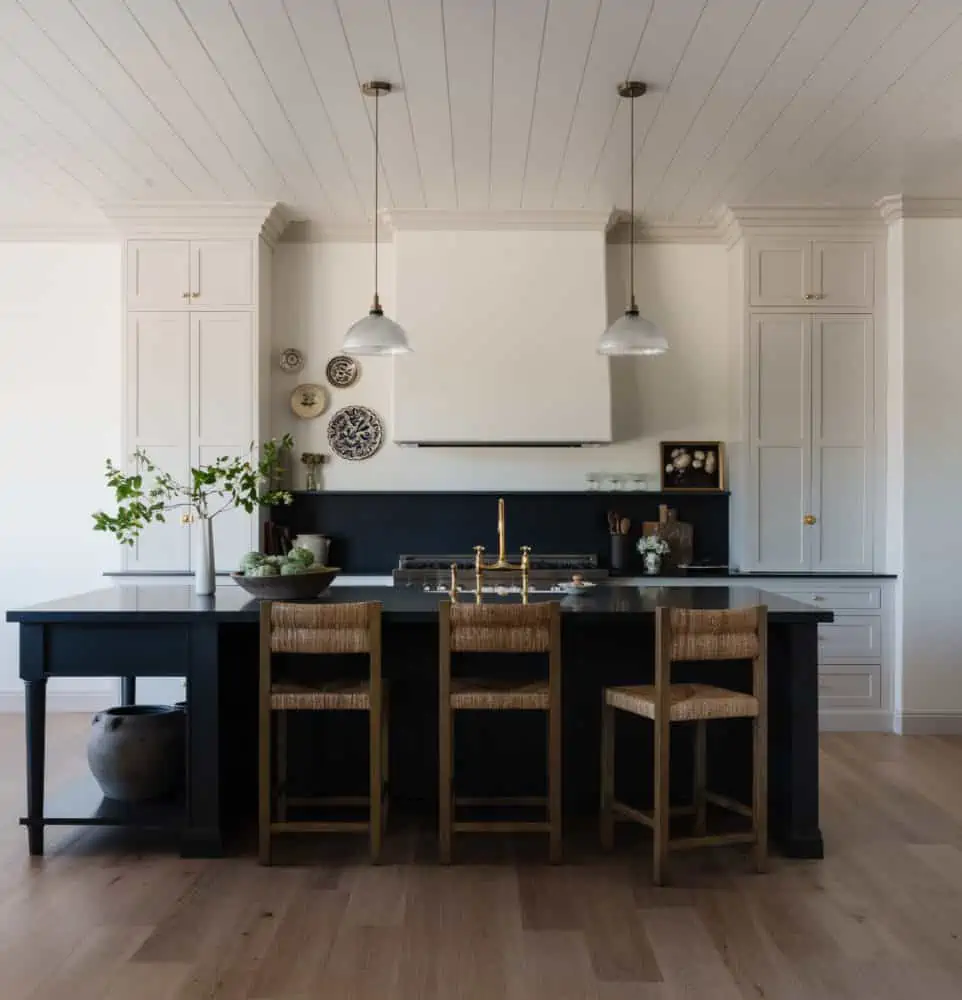
How to choose light fixtures for an open floor plan?
If you’re struggling to create a cohesive lighting plan for your open floor plan, you’re not alone! With an open floor plan you’ll need to coordinate the light fixtures in order to have a consistent design. (Don’t sweat – I’ve curated different styles below!)
Coordination of the lights doesn’t mean they all have to match, instead add some variation in size, shape, and style!
- Size – Vary the overall fixture size to create a layered look. We recommend a large fixture in the living room, small or medium the kitchen, and small or medium in the dining room. That said, when in doubt: bigger is better when it comes to lighting!
- Shape – Create a balance using different shaped fixtures. Instead of selecting all circular or rectangular fixtures, opt for a variety of shape styles.
- Style – Be sure to layer in a variety of styles of fixture. For example, don’t ONLY use lanterns. Don’t ONLY use globes. Instead, mix globes, lanterns, and shades all together.
Overall make sure each fixture has the same underlying essence: don’t mix something ultra modern with something ultra traditional, maintain balance when mixing styles and avoid extremes.
In addition to varying the type of fixture, you can (and should) absolutely mix metal finishes. As a rule of thumb: avoid mixing more than three different finishes.
Open Floor Plan Lighting Combinations
Contemporary Light Fixtures
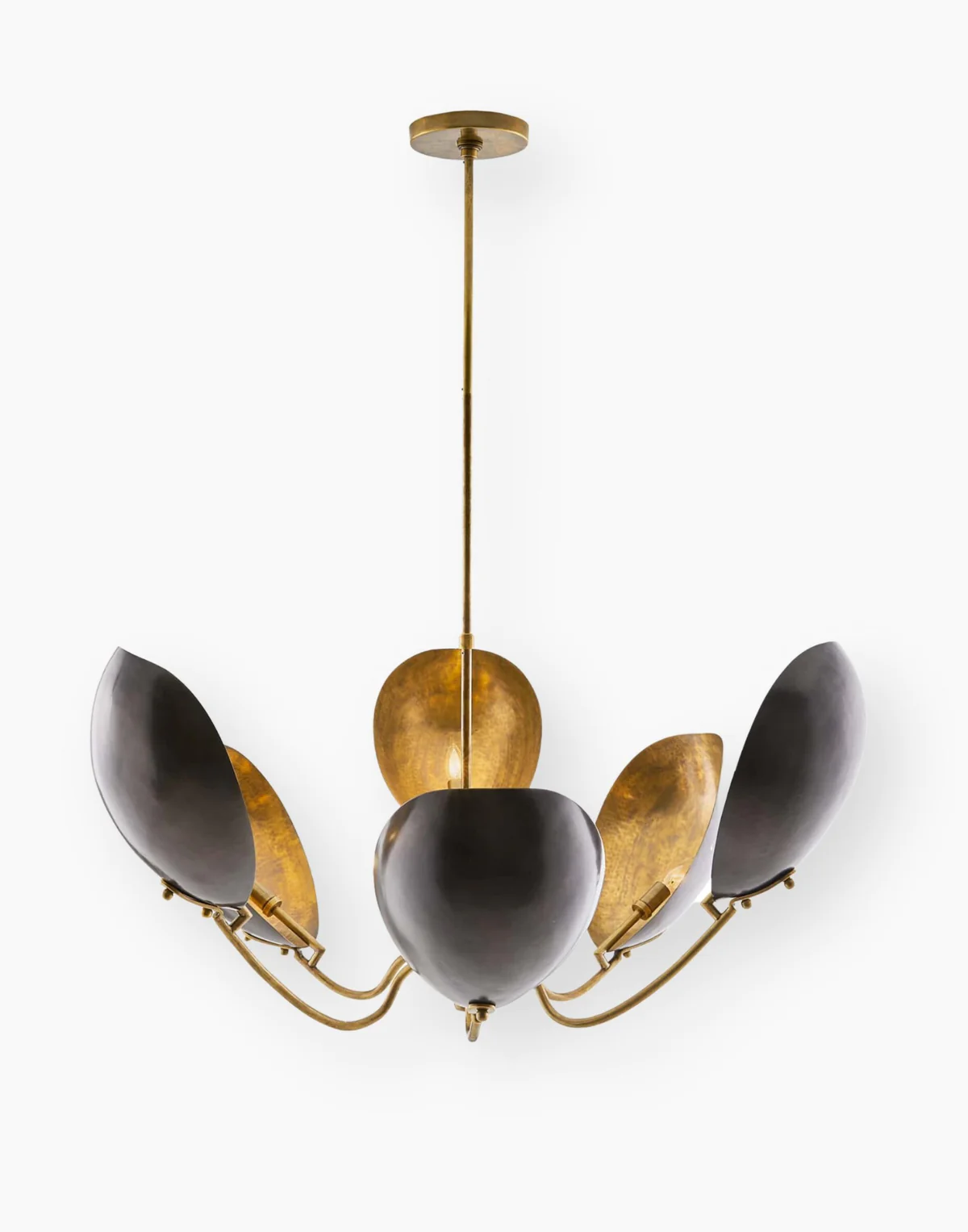
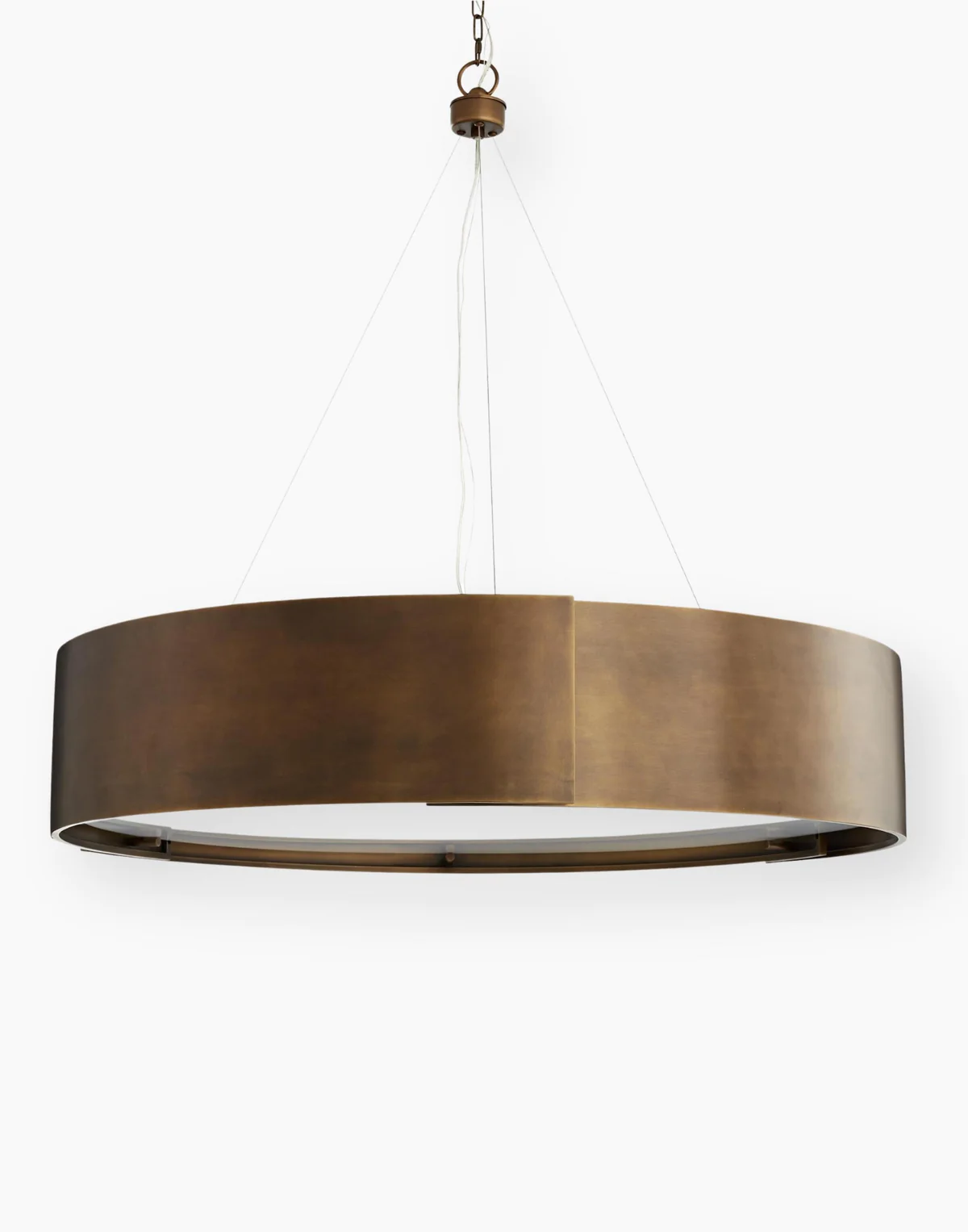
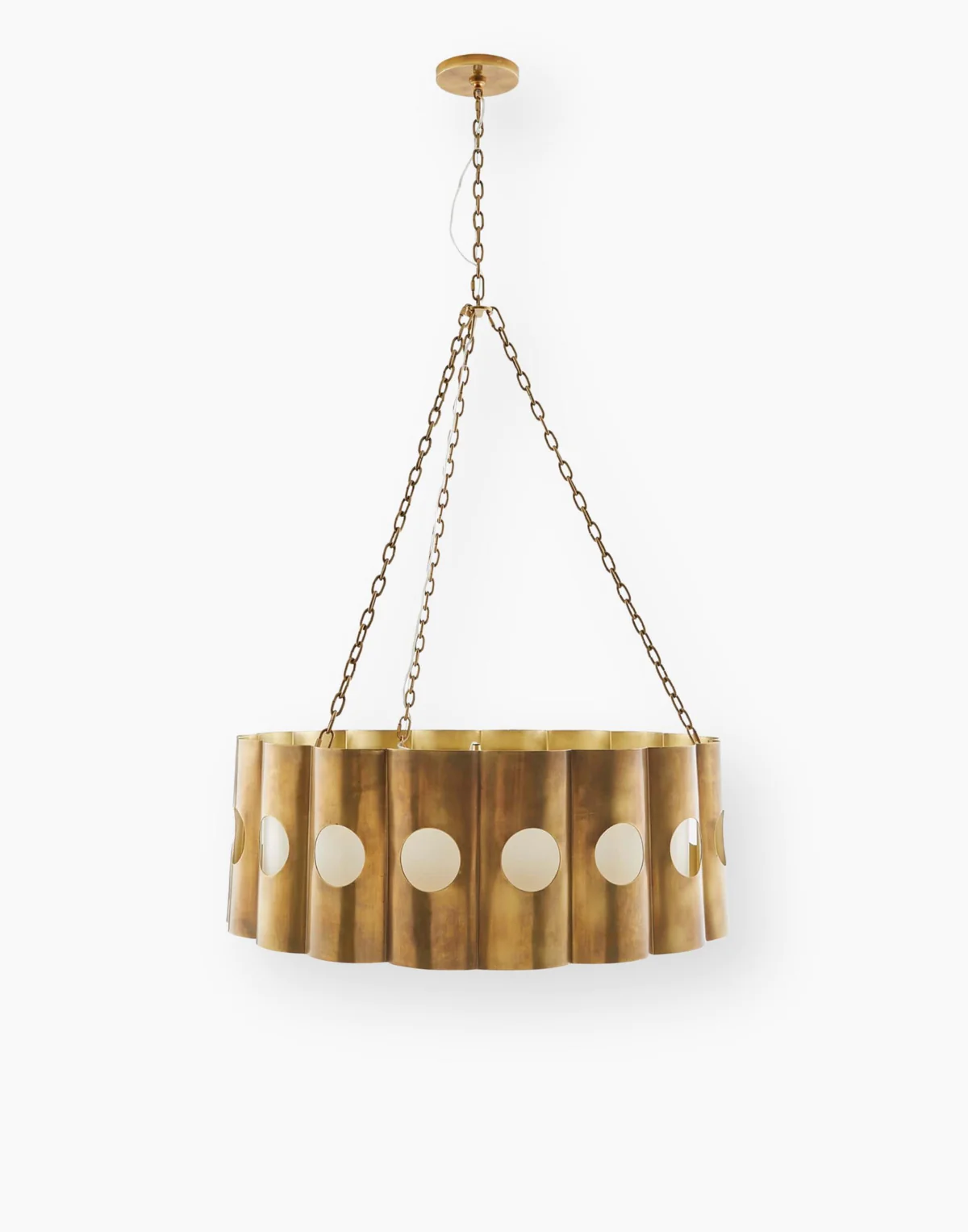
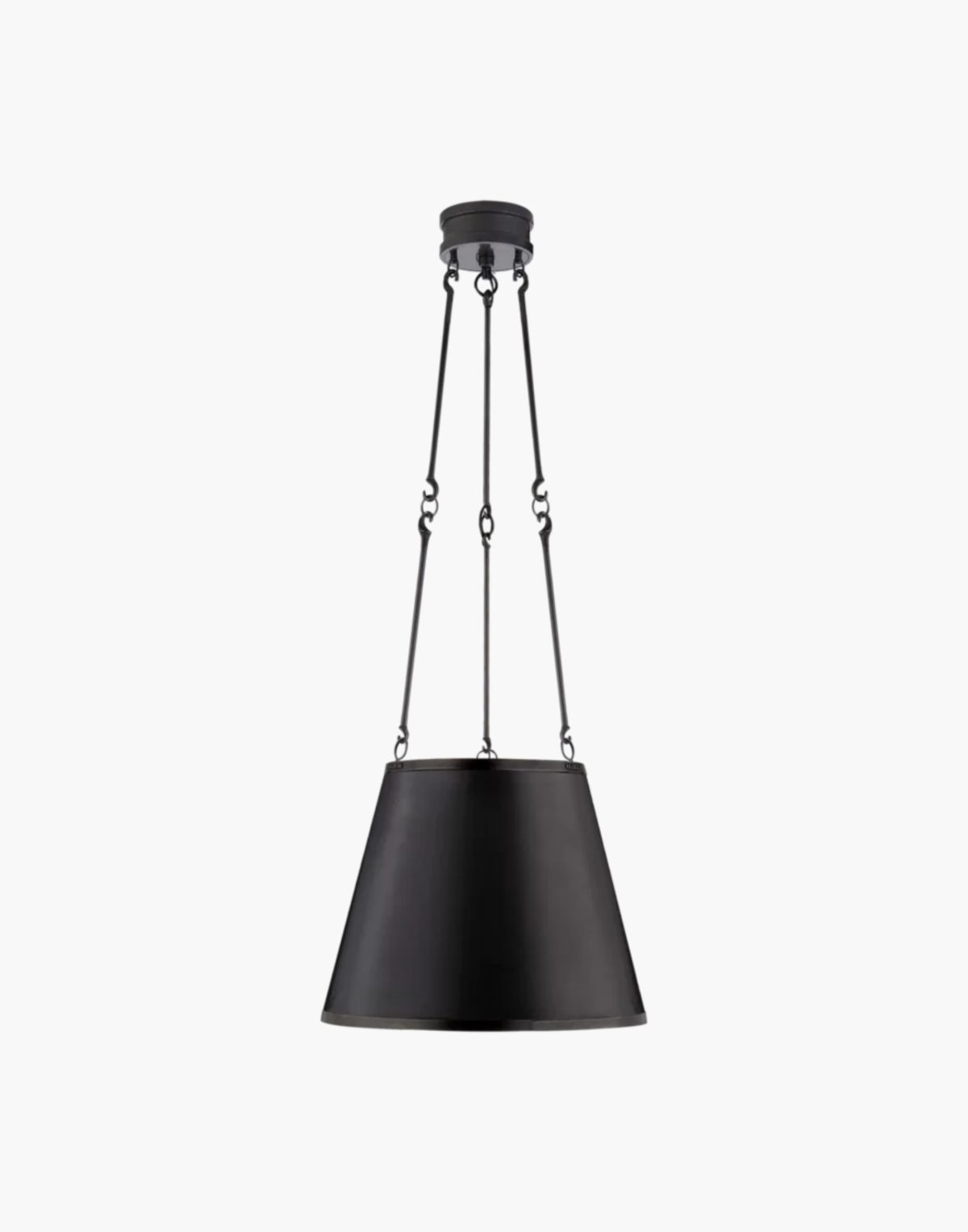
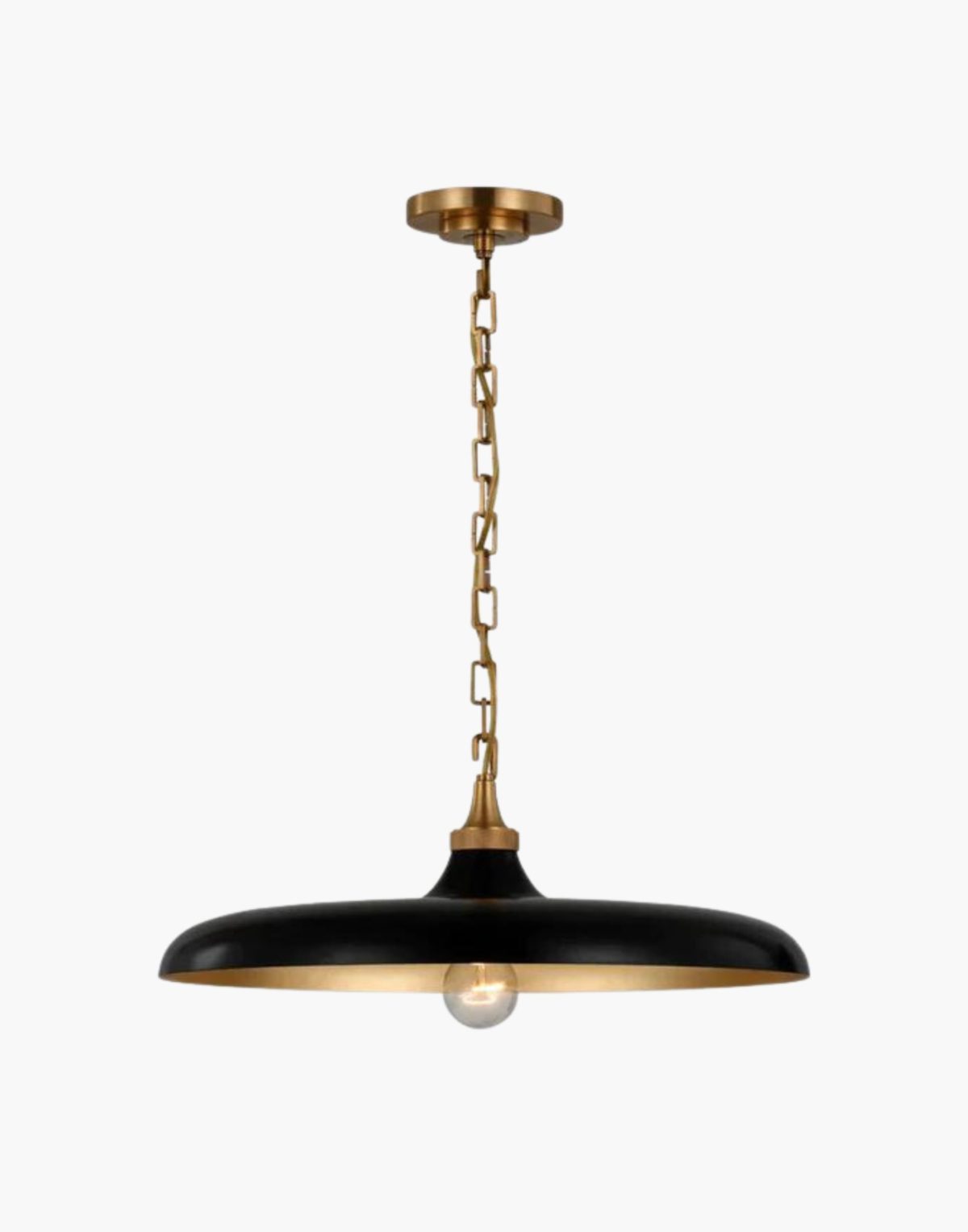
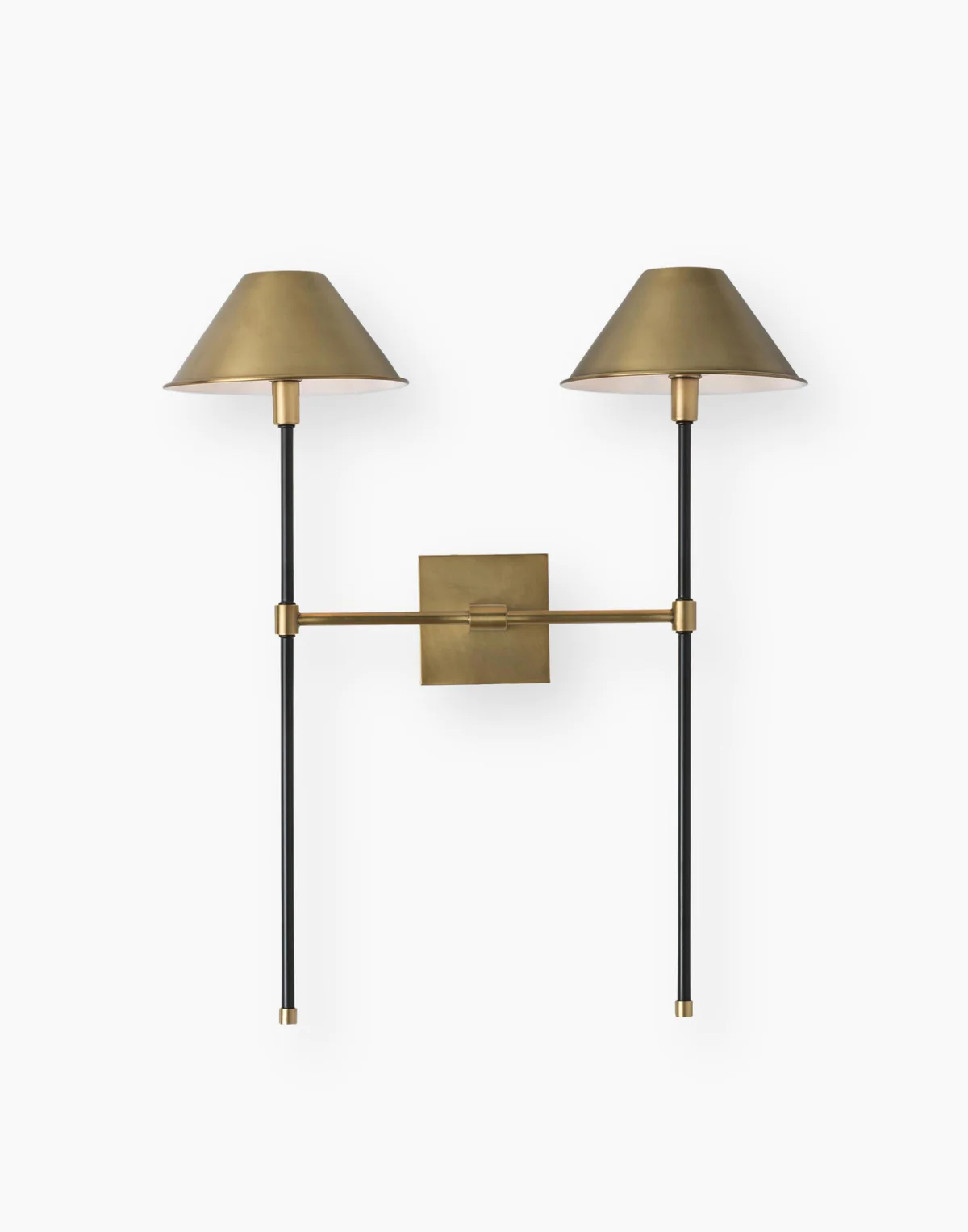
Traditional Light Fixtures
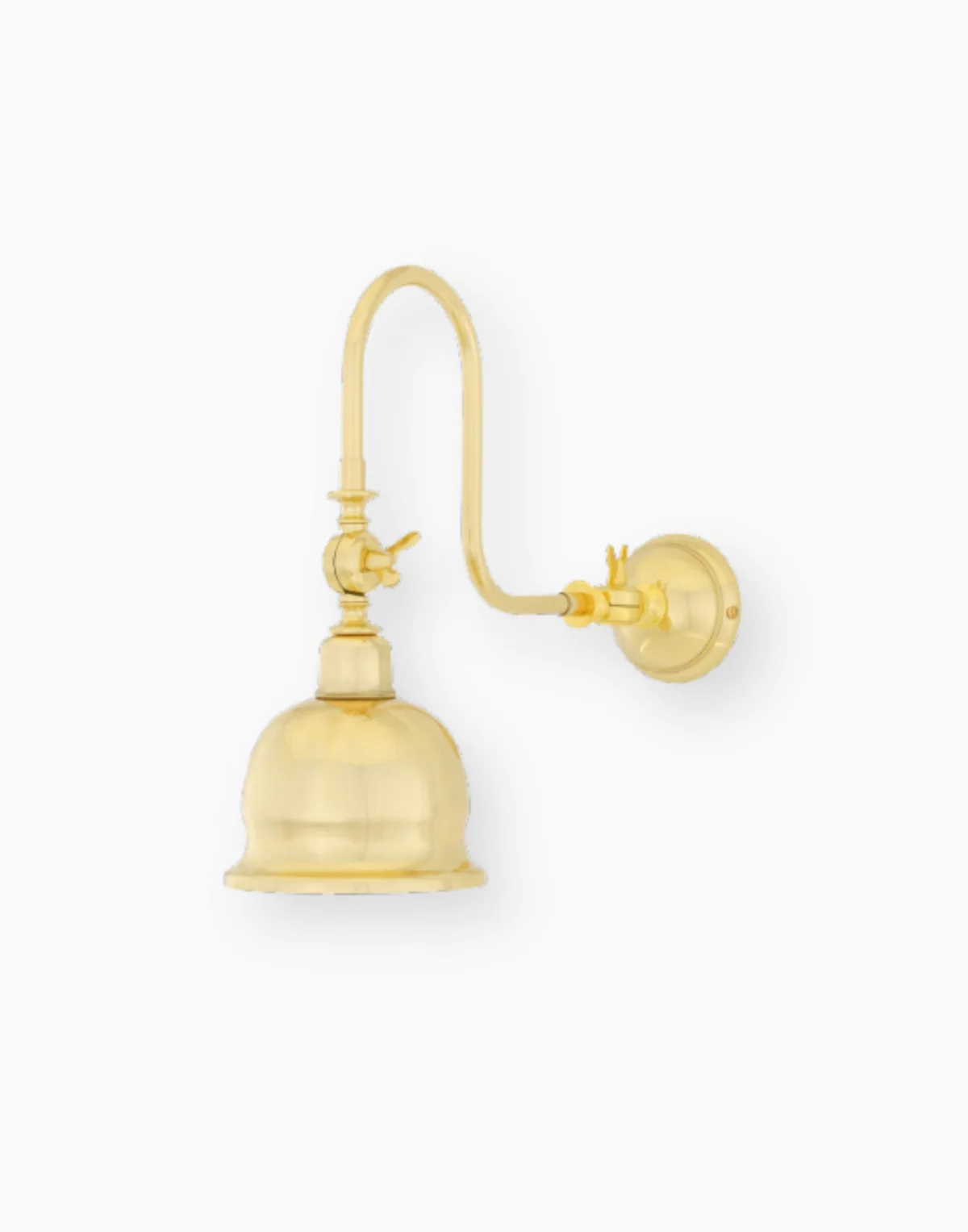
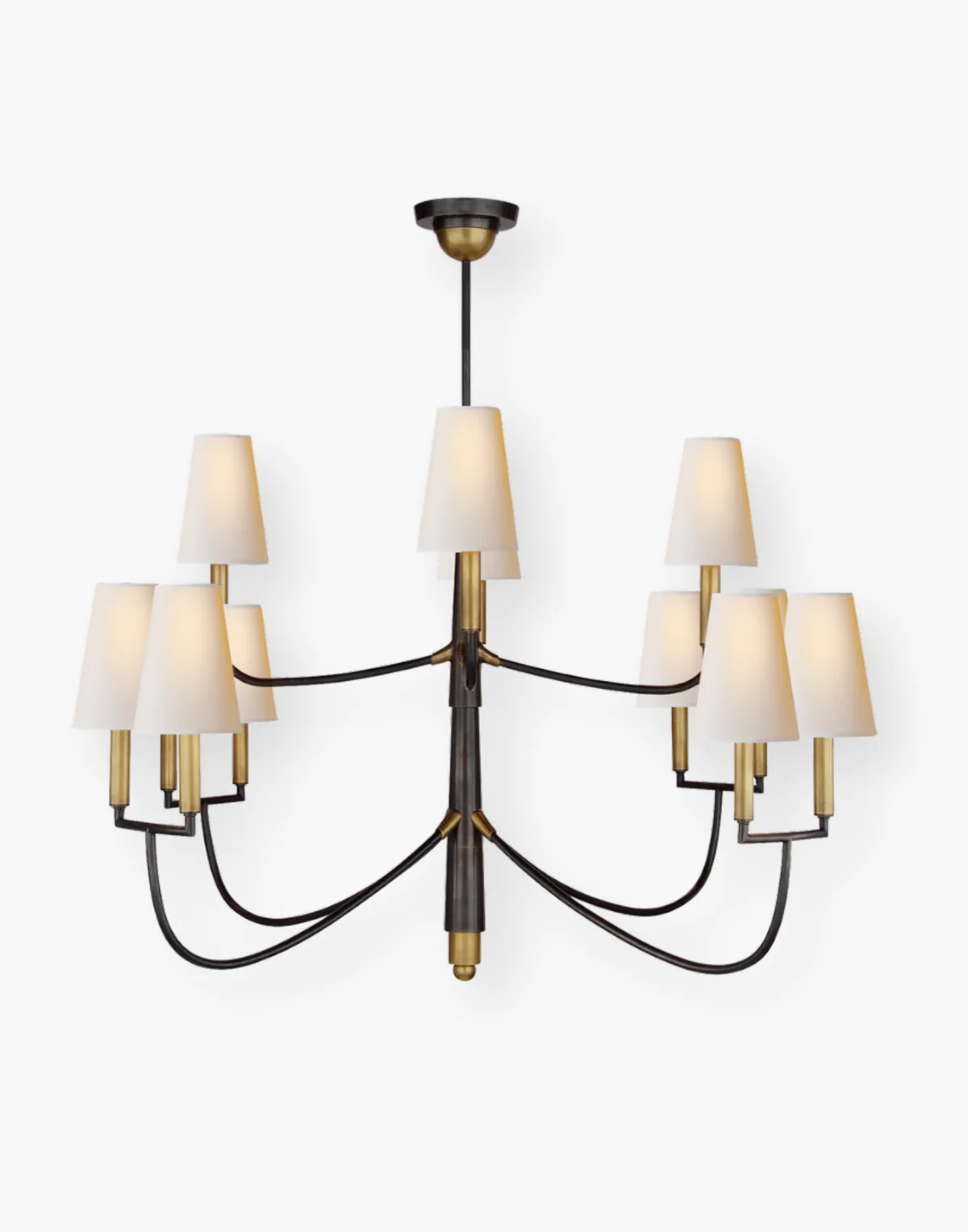
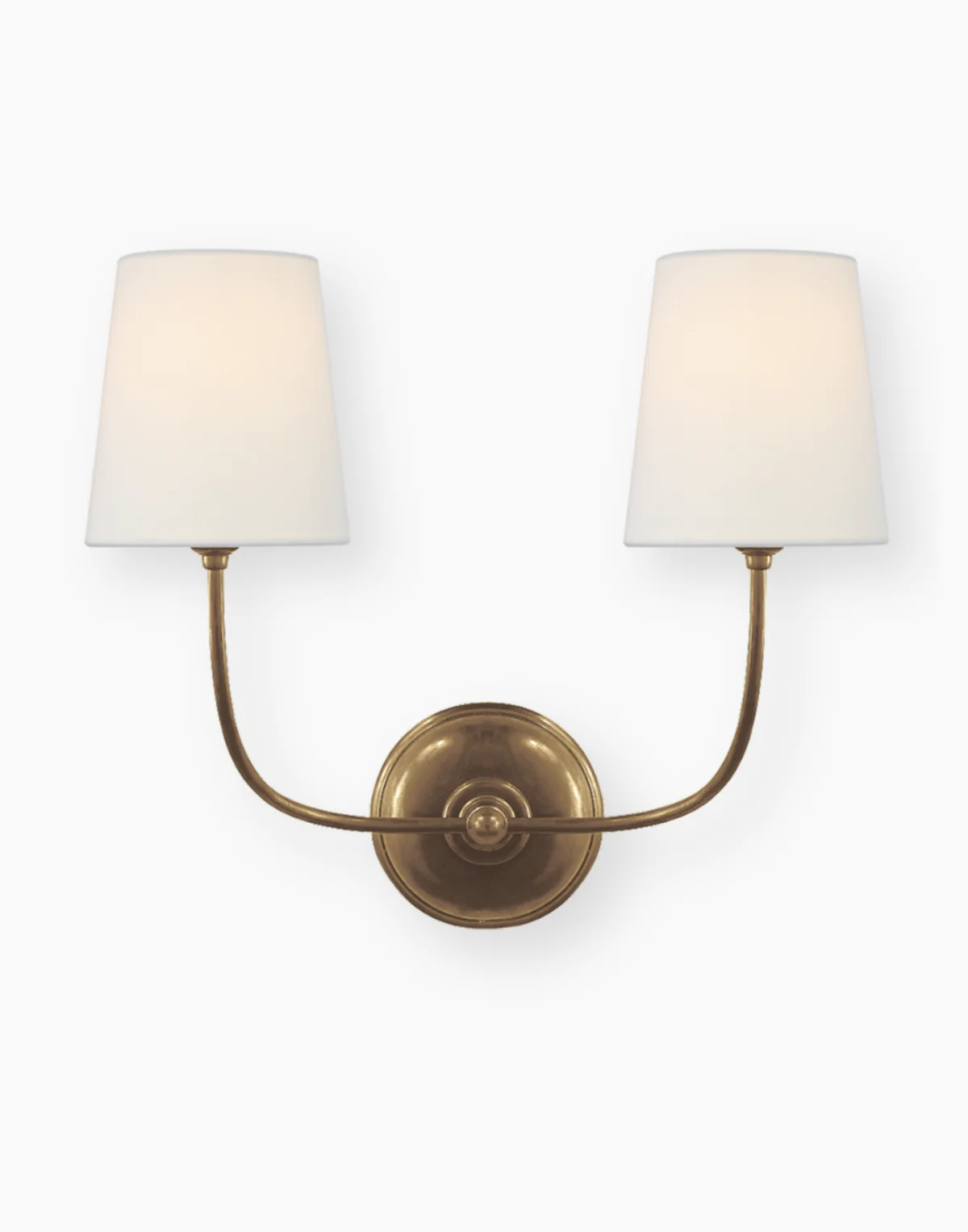
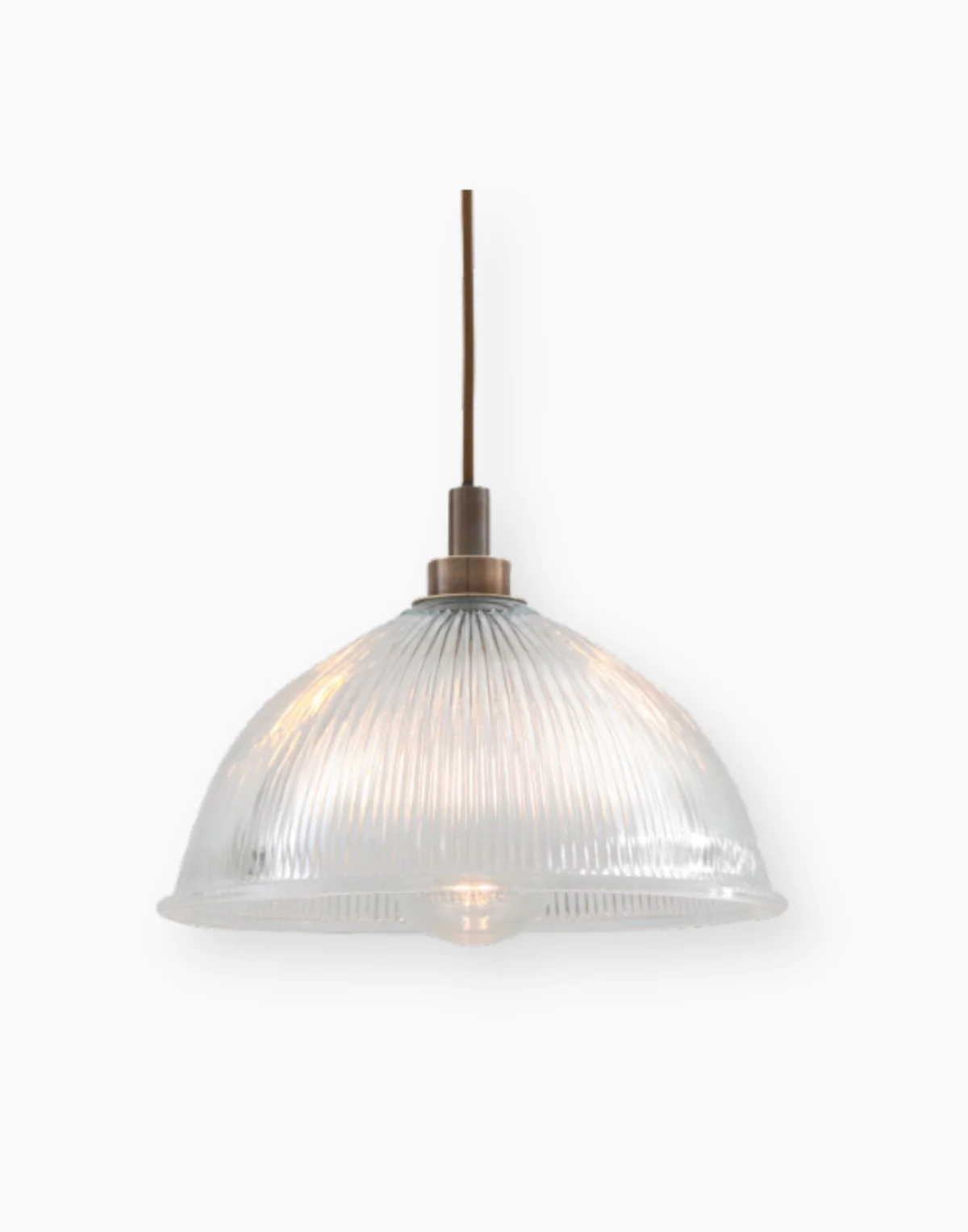
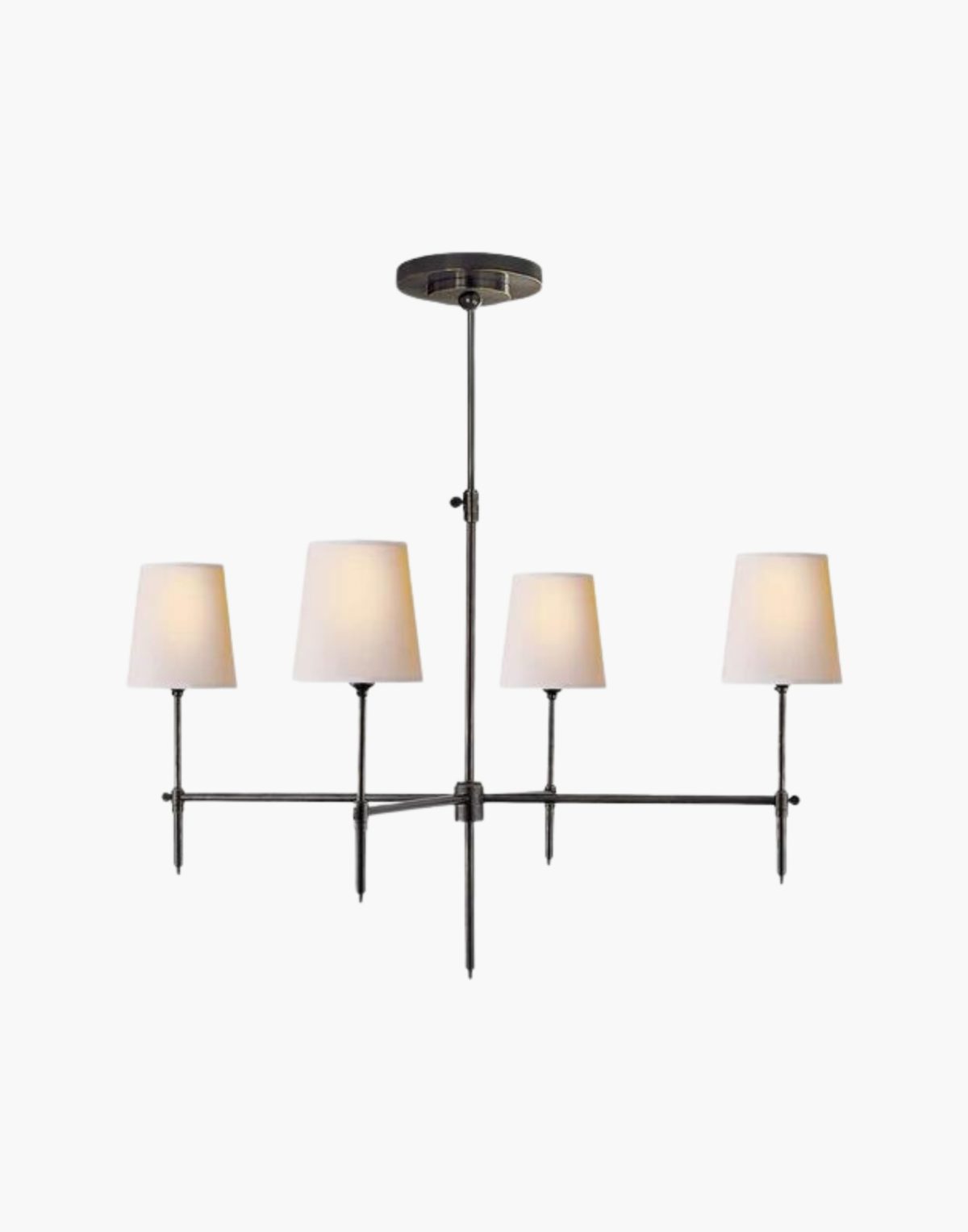
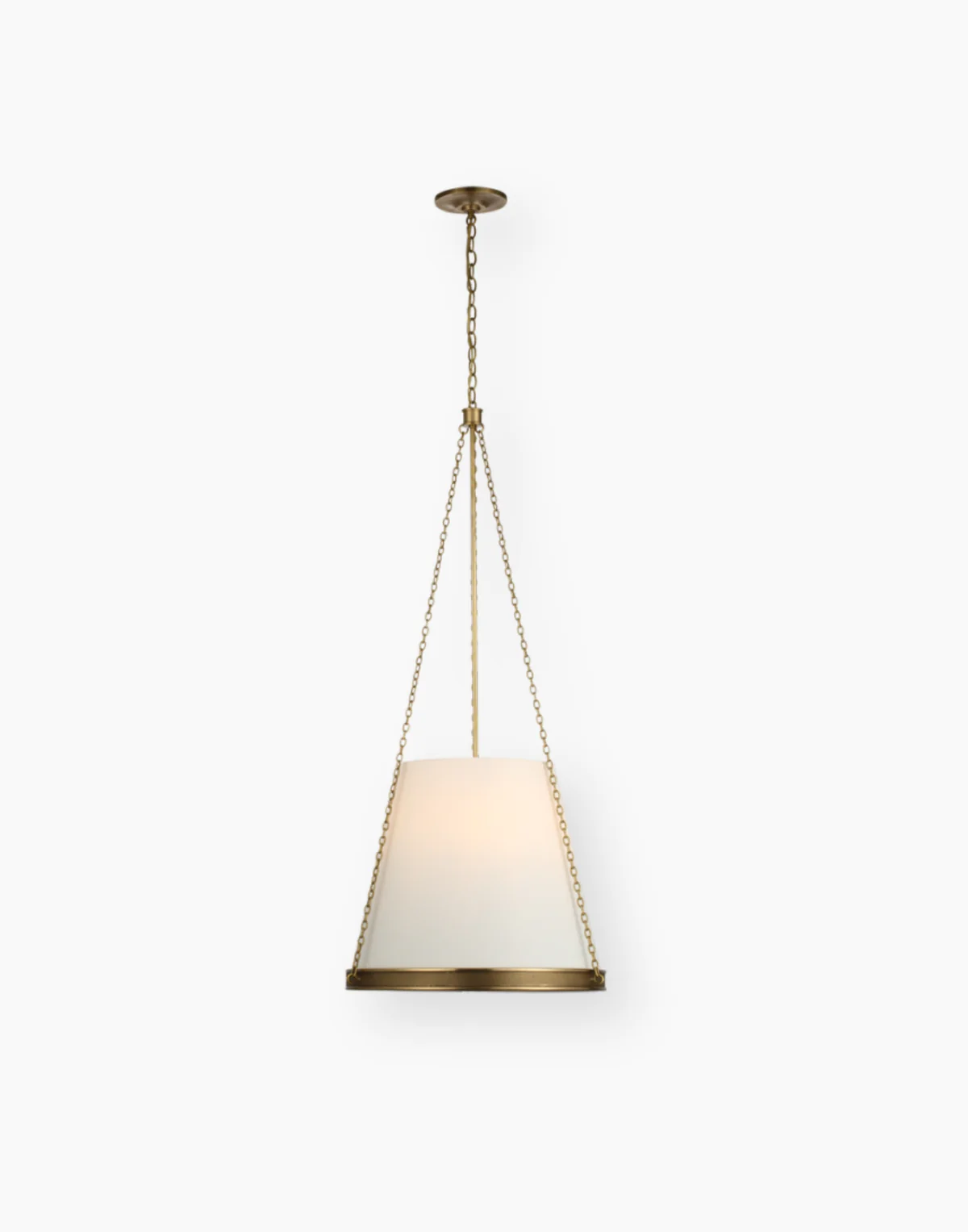
Transitional
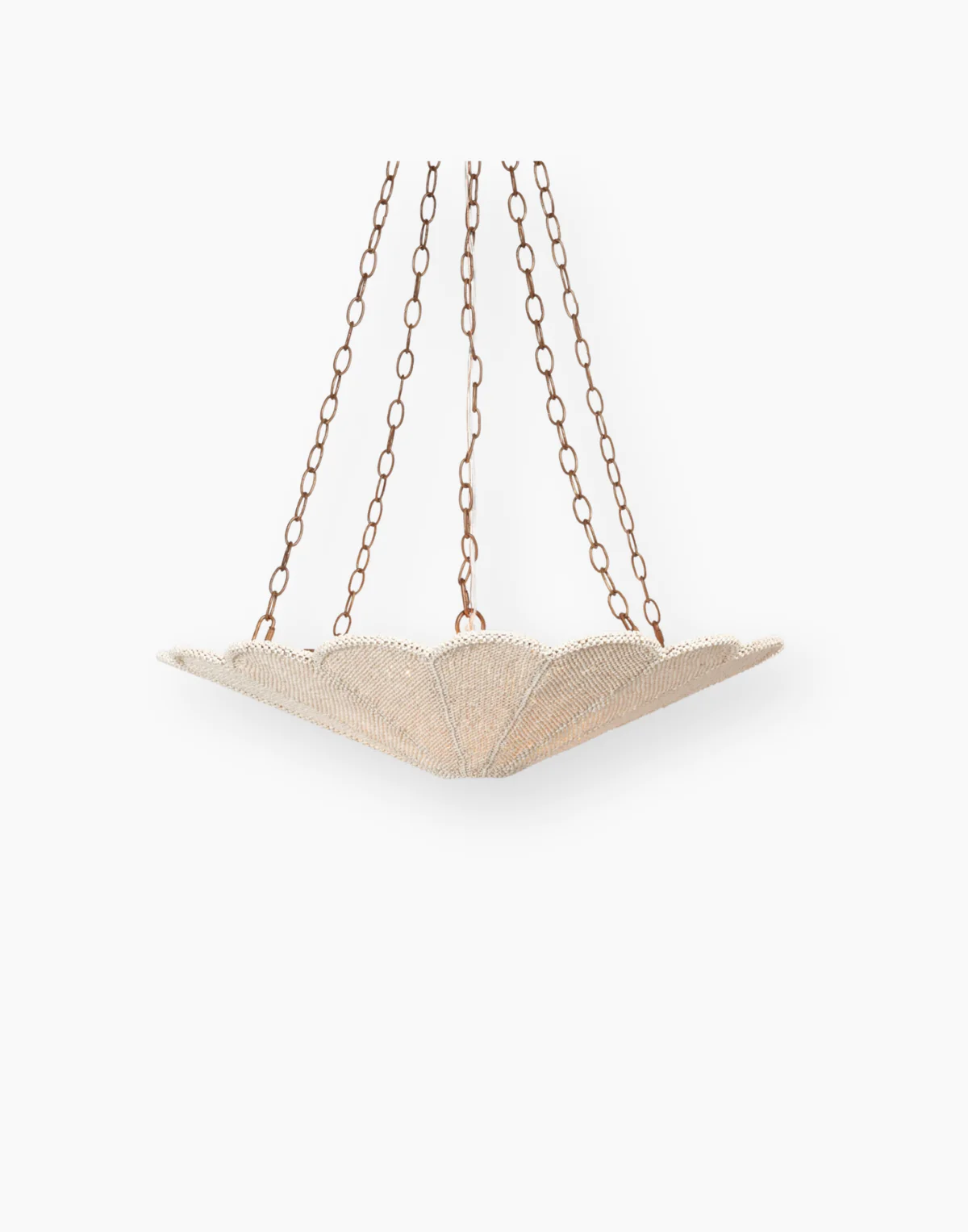
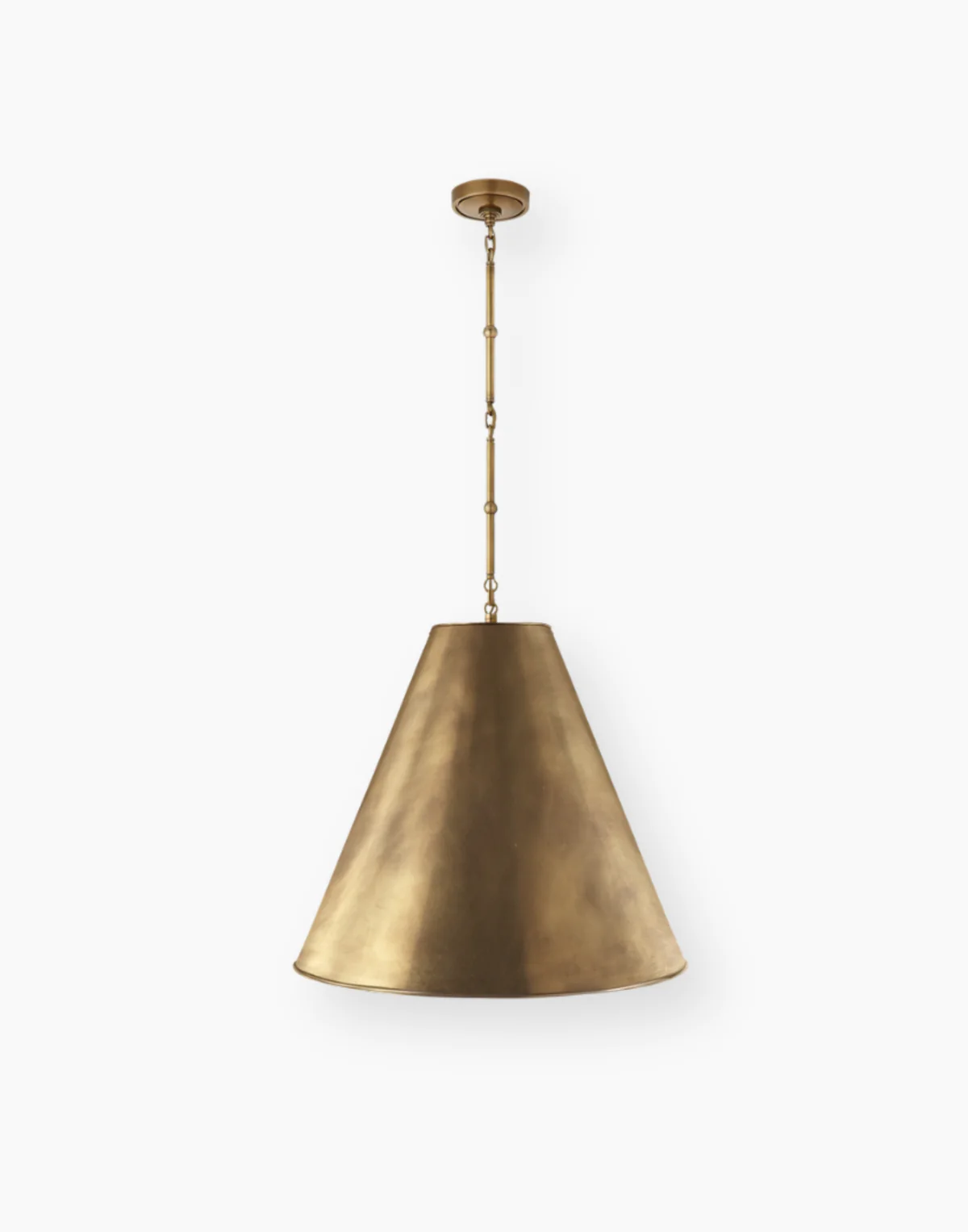
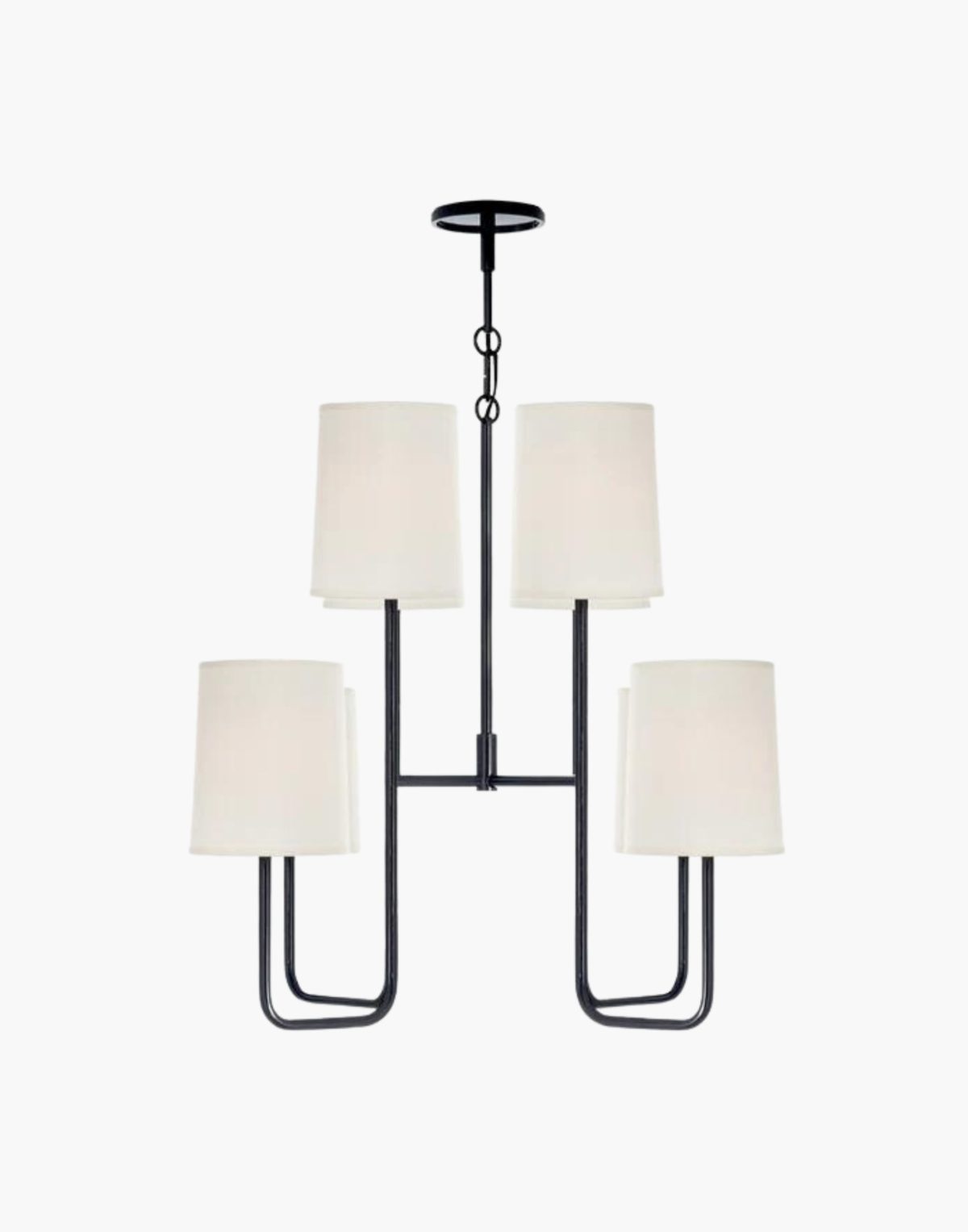
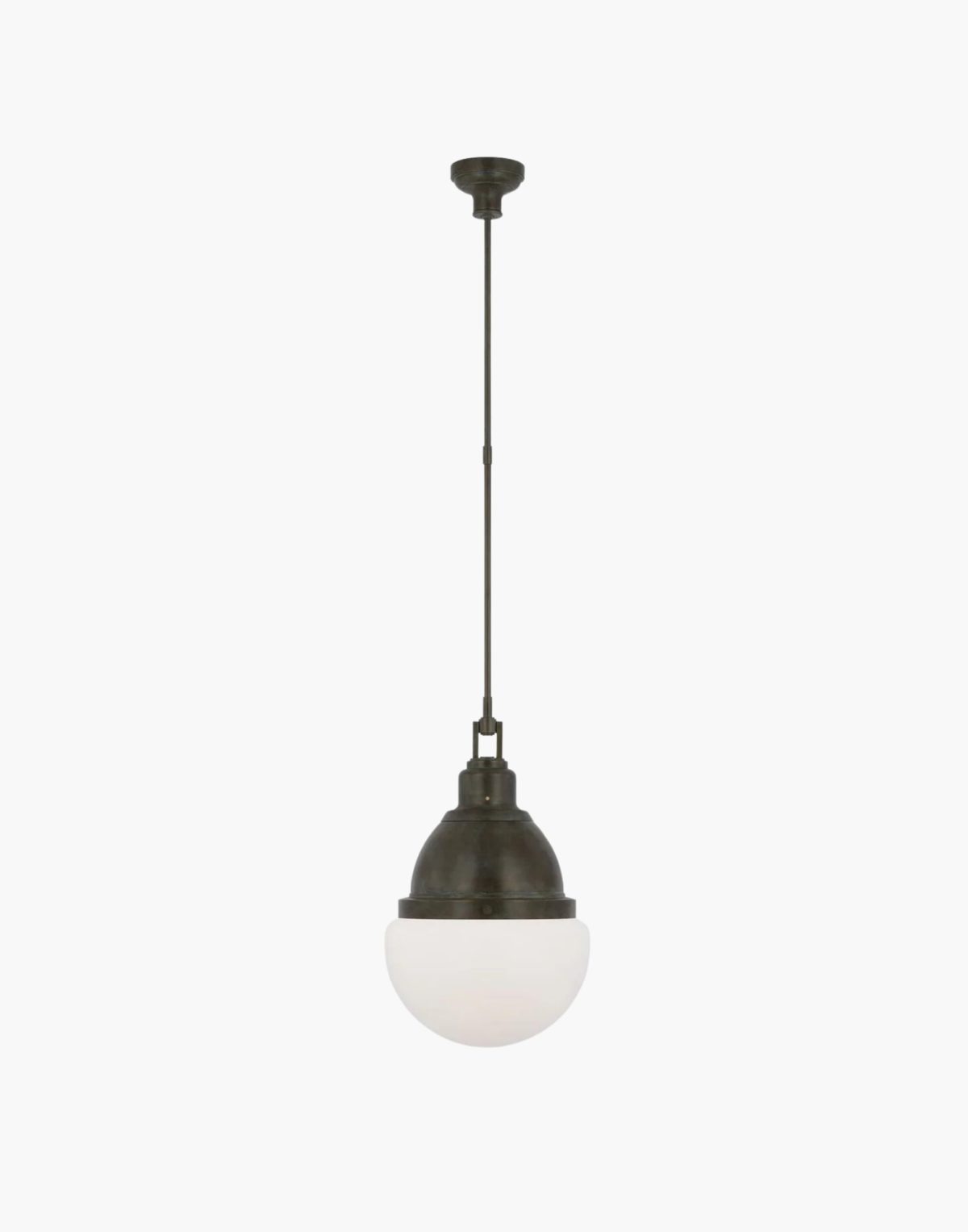
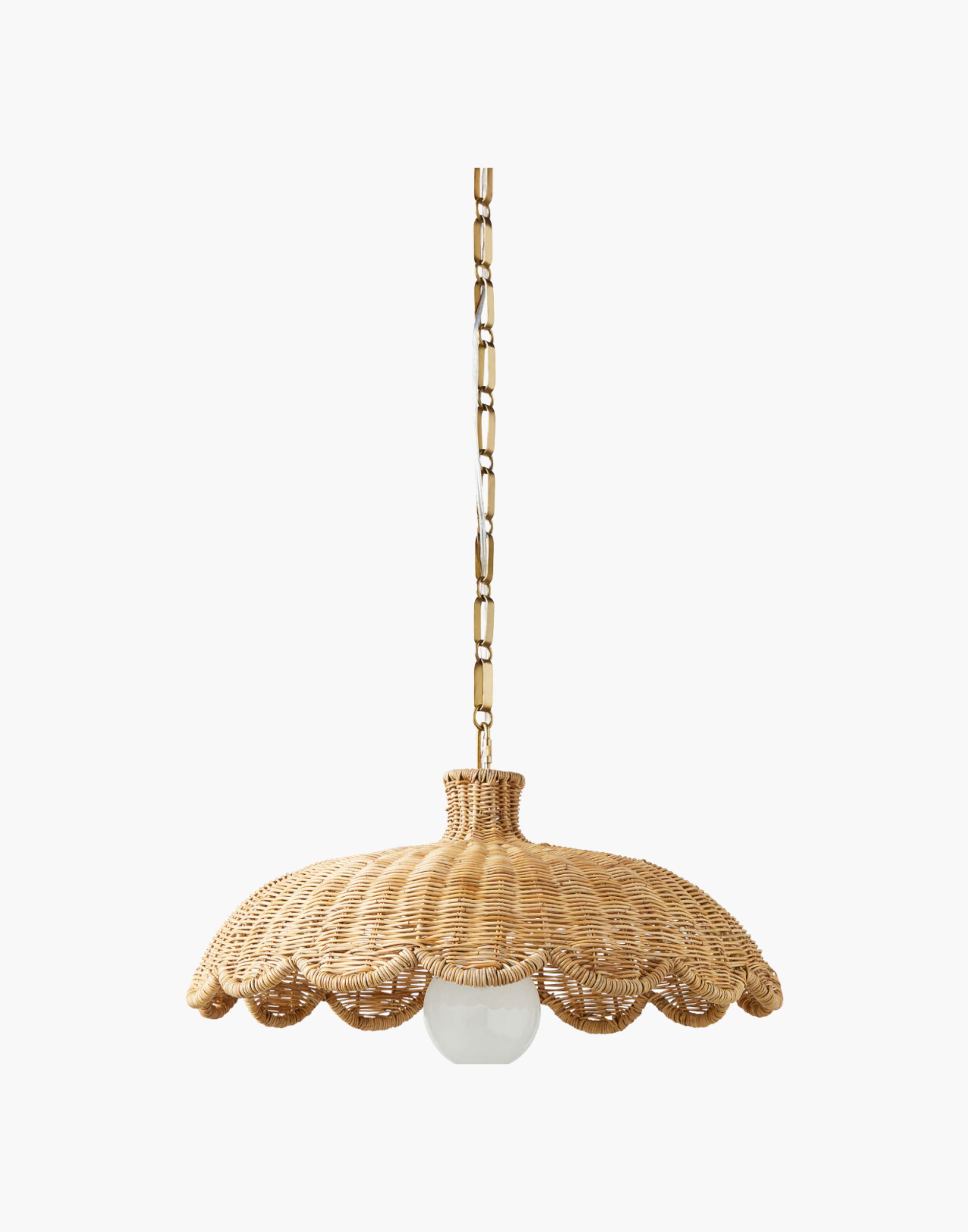
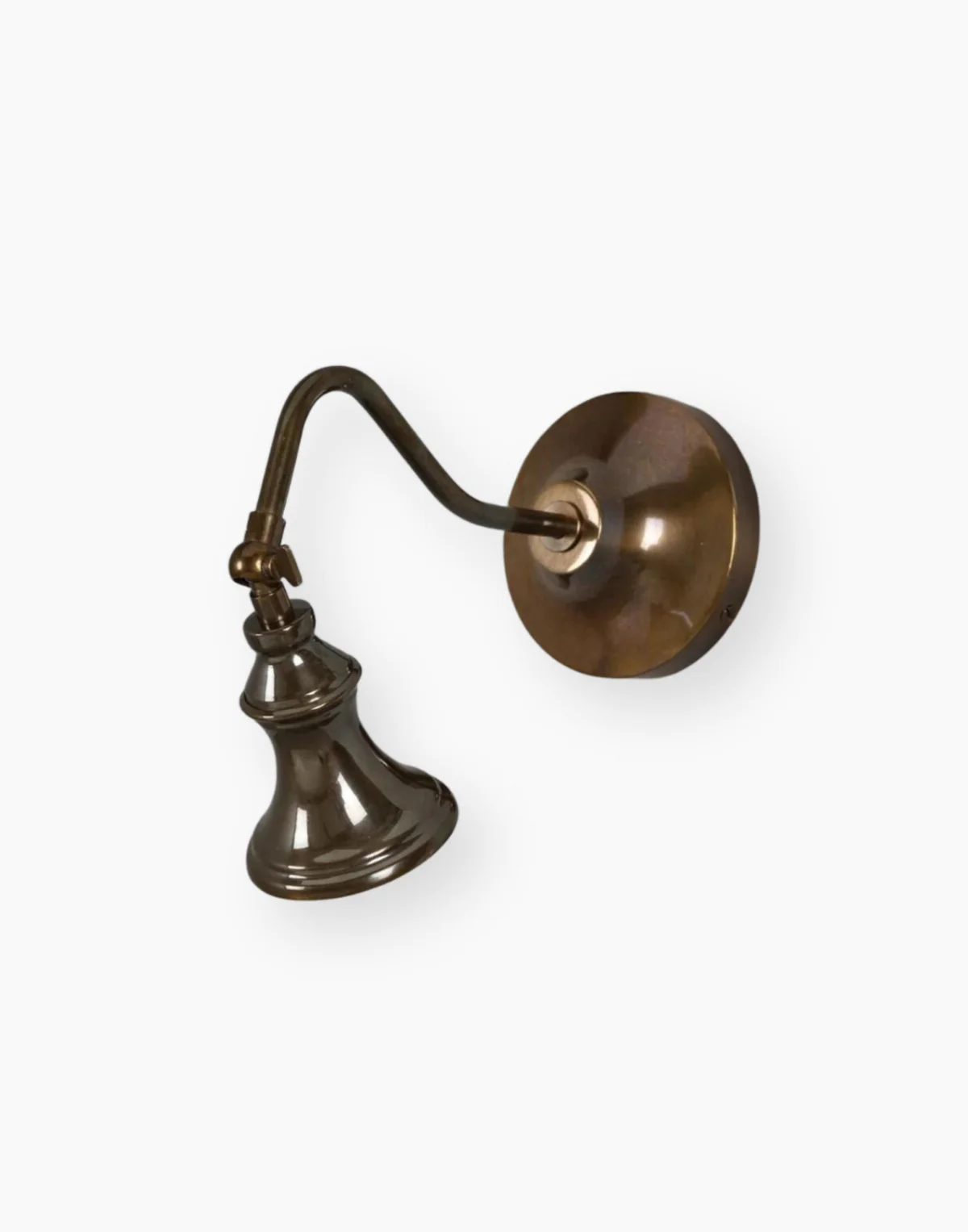
Modern Light Fixtures
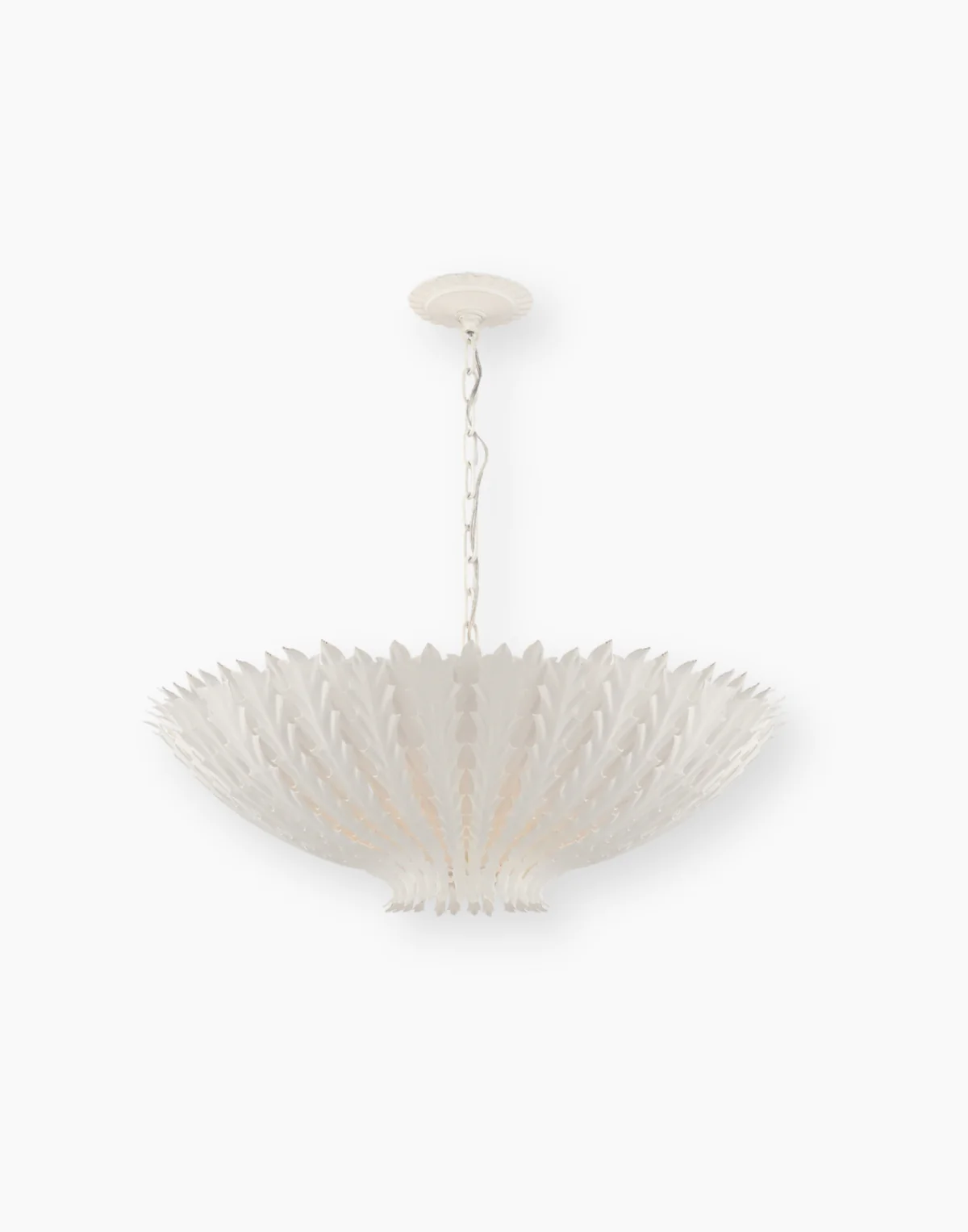
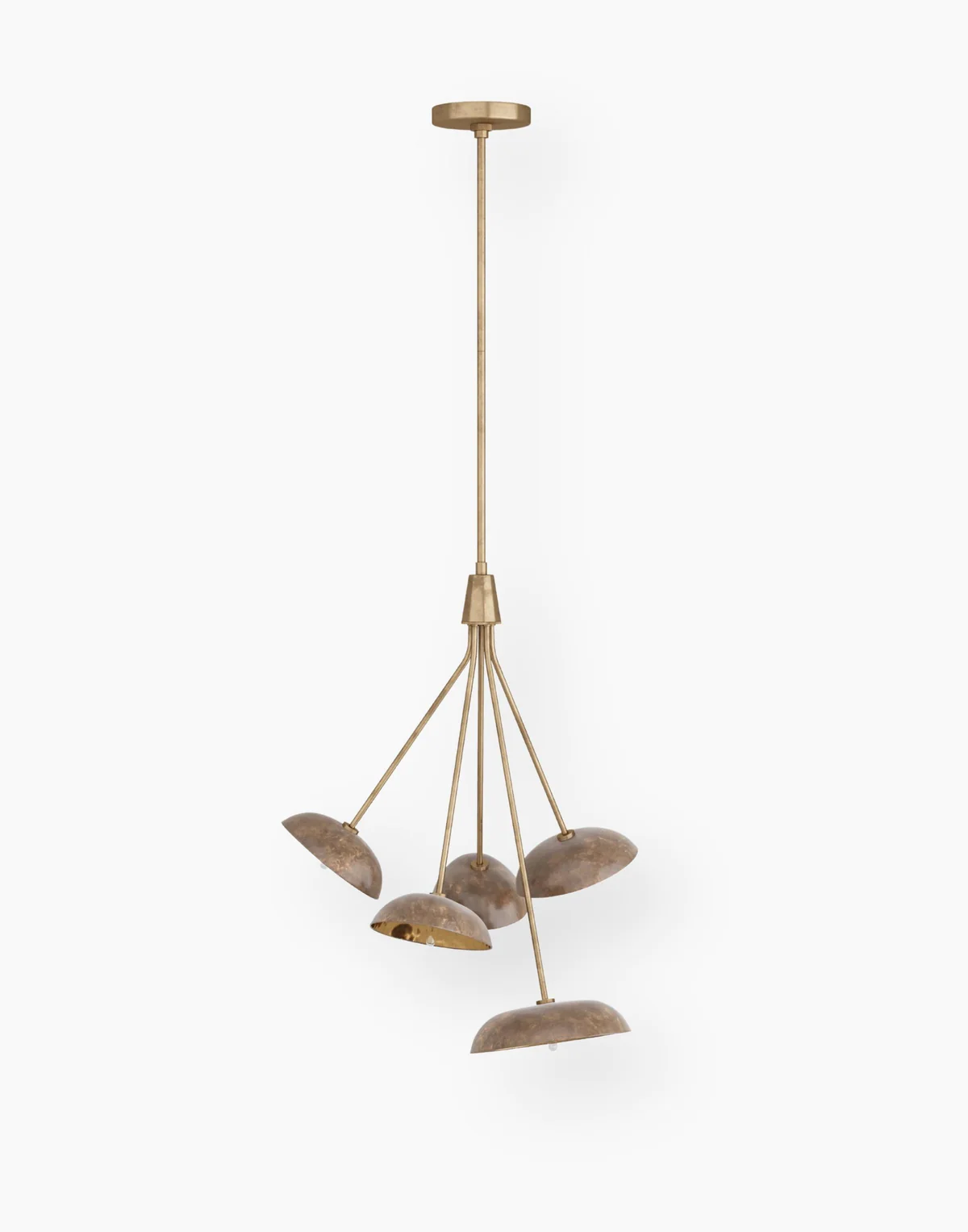
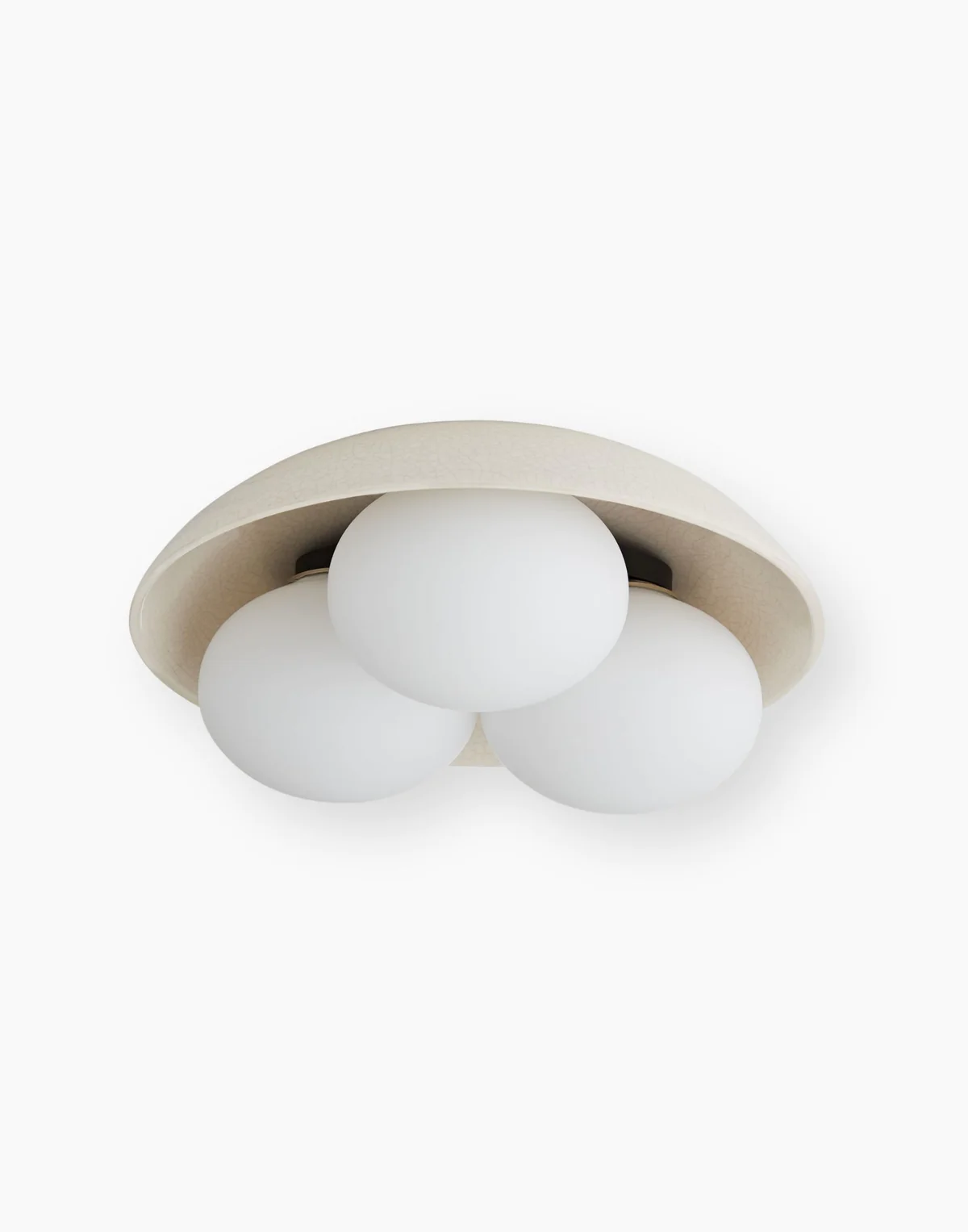
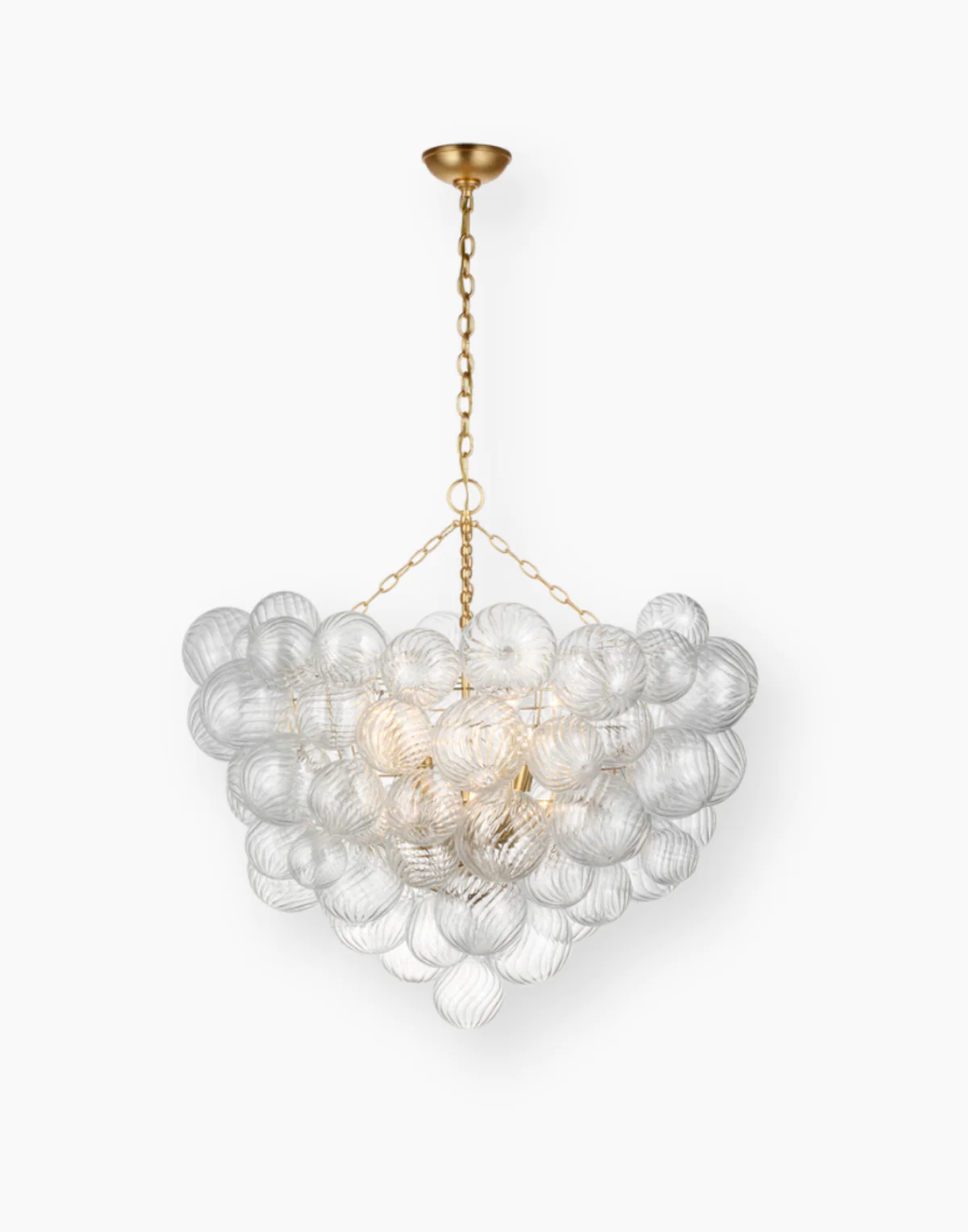
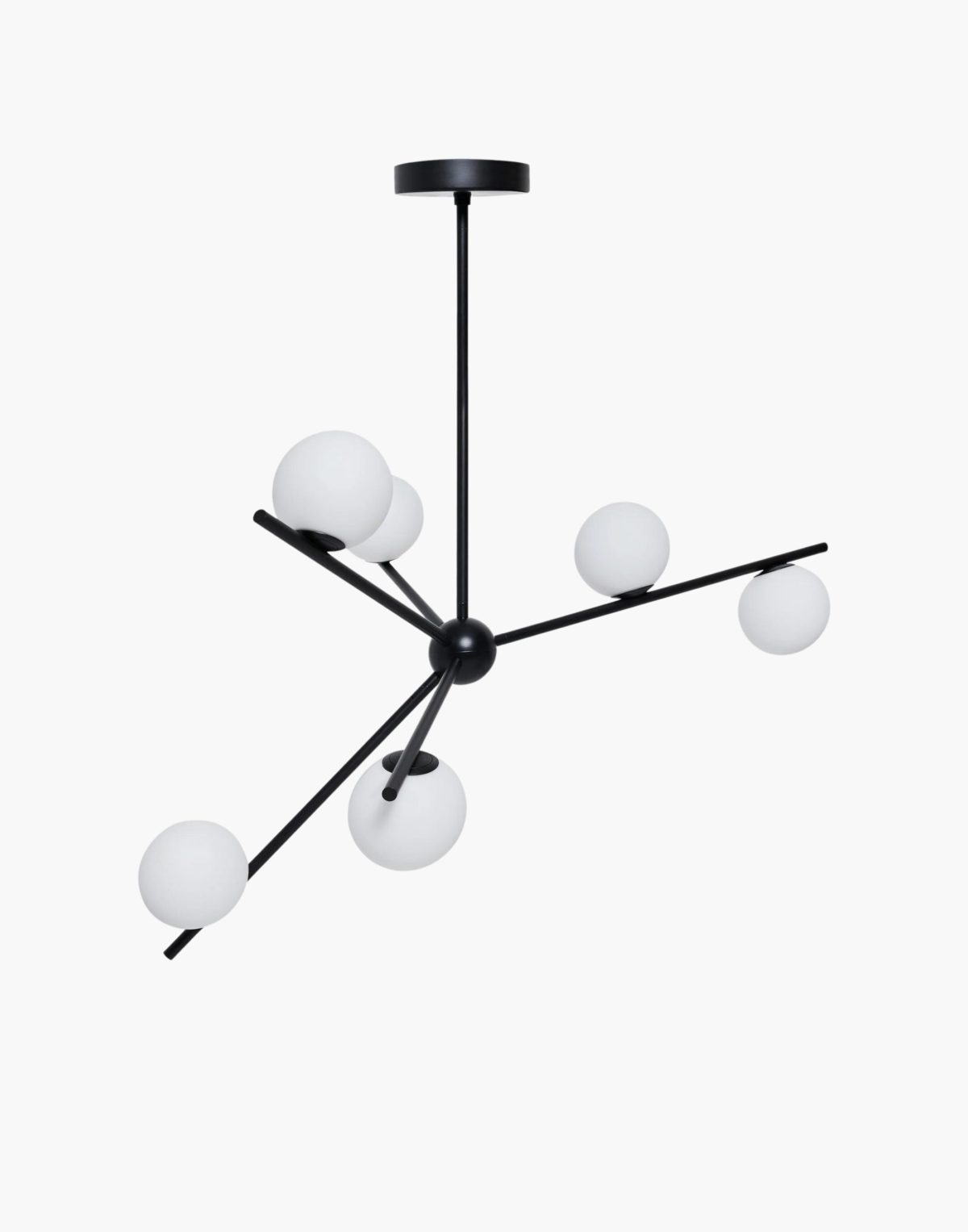
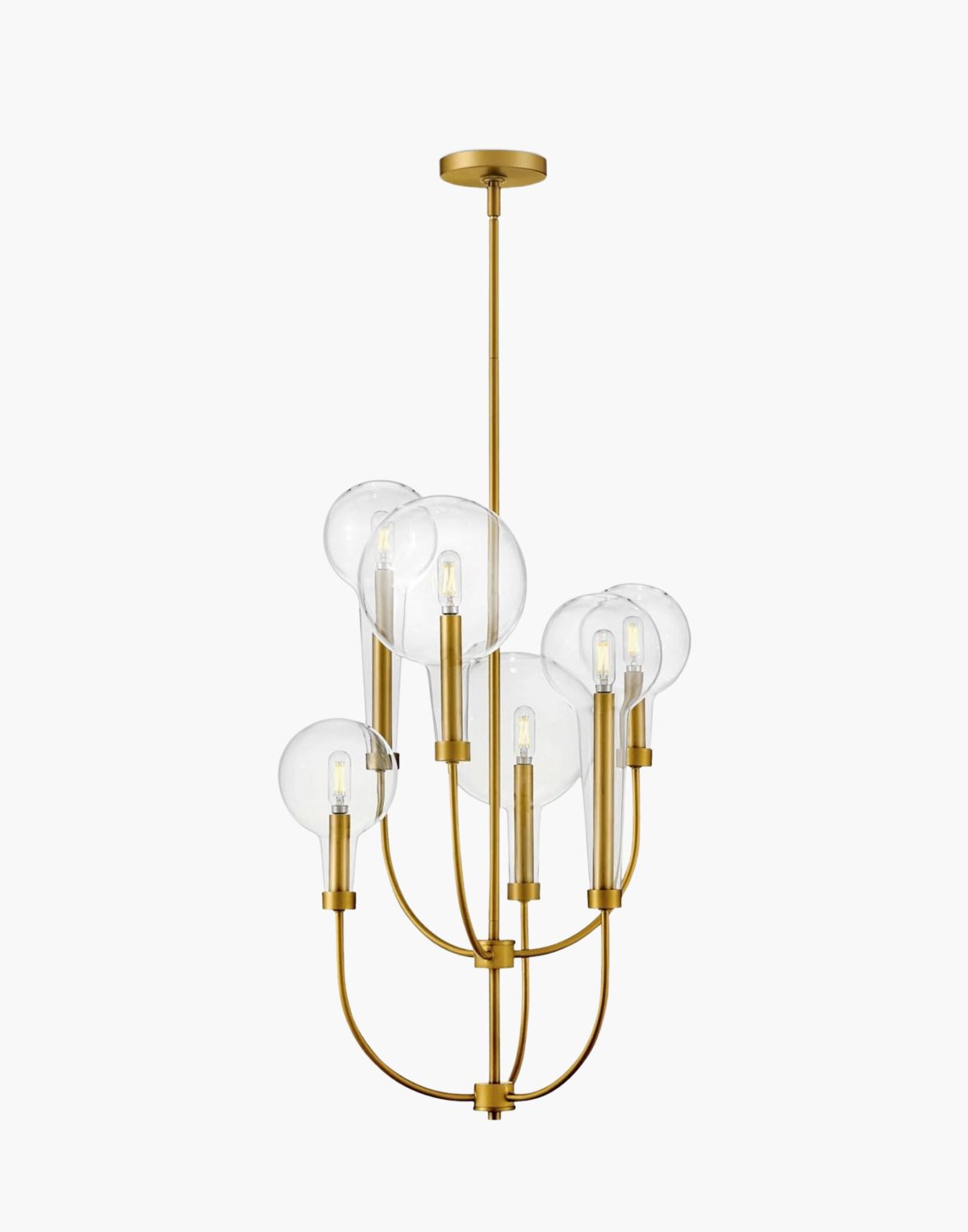
More interior design tips:
Learn how to expertly hang curtains with our guide: How to Hang Curtains!
Stumped on backsplash? Check out our guide on: How to Choose the Perfect Kitchen Backsplash. You’ll also love our guide to White Concrete Countertops!
Love brass? Us too! Shop our picks: The Best Brass Faucets for your Bathroom.
Updating your flooring? Learn everything you need to know about laminate flooring in our guide to Pergo Flooring Review, and check out Engineered vs Hardwood!
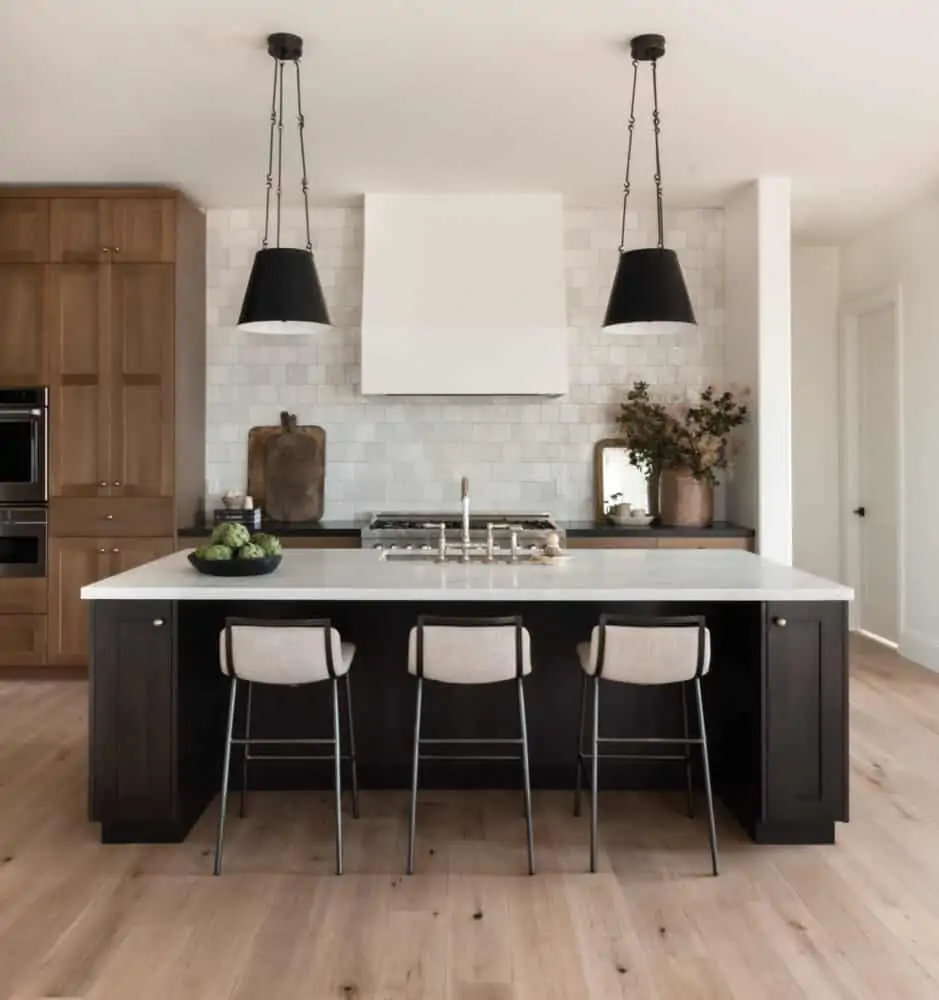
The Impact of Lighting
Lighting dramatically improves a space and shouldn’t be an after thought. Consider it the jewelry of the ceiling or the furniture for the 5th wall (the ceiling).
Think about the difference lighting makes in a space in a hallway, living room, entry, kitchen, etc…
You can create what we call, a hallway of dreams, simply by adding three pendants! Lighting makes a grand entry vs. a staircase. A cold white kitchen vs. warm inviting space.
Am I stressing its importance enough for you? ;)
What to Consider
So you might be wondering, how do I choose light fixtures for my home? There are three major considerations we take into account when making selections:
- Finishes: Mixing metals is great, we encourage it. In fact, I don’t think I’d design a space without mixed metals. Be sure not to get too many brasses or too many bronzes. A few shades is okay, but if you’re mixing a lot of different brands, the variations in brass can start to feel distracting, especially with budget friendly options.
- Styles: Mixing styles is fine, bridge the gap with balance. Be careful, more modern finishes are going to be matte black or champagne brass, or chrome. When you’re matching make sure you’re not putting bronze with black.
- Size: Make sure the lights are big enough. Larger is going to feel more luxurious. I think pendants should be at least 14”. Go bigger with less quantity – 2 large is better than 3 small.
Finishes
The ‘finish’ of a light is the color. Some lights are ceramic or enamel, but most lights are some sort of metal finish such as brass, nickel, bronze, or chrome.
I highly encourage you to mix it up and include multiple metal finishes within your home! It will create a layered, beautiful look. The rule of thumb is to keep it to about 3 finishes in a single space.
If you’re mixing brands, you’ll most likely get different variations of a finish – especially with brass. So I suggest ordering a sample or analyzing the photos in details to make sure that the brass shades coordinate well!
Some of my favorite mixed metal combinations are:
- Brass + Black + Nickel
- Brass + Nickel (could also add in some bronze)
- Brass + Bronze
- Chrome + Black
- Bronze + Nickel
Overall brass, bronze, and nickel are warm finishes and chrome and black are cooler finishes (although black can go either way). When mixing metals, it’s best to mix warm colors with each other and vise versa. Sort of like picking paint!
Be sure to check out my post on How to Choose the Best Interior Paint Colors for Your Home.
Style
The overall style of the light is the key factor of selecting cohesive lighting. You want to make sure that each light comes from the same family.
While this may or may not come intrinsically, you can look for curved edges vs geometric angles.
A more angled light fixture is generally a more modern piece and a curved light fixture is usually more traditional. This isn’t a firm rule, but it can help you analyze each fixture to see if they coordinate well together.
- Consider the shade style: Either match them or make them different enough so that it doesn’t look like you tried to match them and missed the mark.
- Overall Style: Mixing styles is fine, but bridge the gap by balancing the shapes and lines.
- Don’t match everything: I don’t like to have more than one shaded fixture in a space, or more than one dome fixture in a space, etc… I will pick three different types of lights to get a curated look. Ex: One chandelier, one large pendant, and one medium pendant.
Size
A common mistake I see is too small of lighting. Unless you’re strategically designing a minimal space, make sure the lights you select are larger enough for your design.
- Larger lights will feel more luxurious.
- I think pendants should be at least 14”. In a kitchen, I typically suggest bigger with less quantity (2 large is better than 3 small…usually). Always adjust for scale though!
- Mix up the size in a single space so that you have variation, don’t select lights that are all the same size and shape.
Design Tips for Lighting
- Not all light fixtures work in all rooms. For example, sloped ceilings will require a chain or a back plate that allows for a sloped ceiling. Some lights are not appropriate for a bathroom. Some lights require a smaller backplate.
- To ensure that you don’t run into any issues, share the ‘spec sheets’ with your contractor or electrician and walk through each space. Don’t assume they will pick up on those details on their own – point them out to them.
- Don’t mix more than three finishes in a single space.
- Hang pendants about 30″ from the countertop.
- Pendants in the kitchen should spaced be about 30″ apart edge to edge.
- Chandeliers should be about 7’+ from the floor. Higher if you have high ceilings.
- When in doubt, bigger is better!
- Kitchen island pendants should be about 14″ +/- in diameter, adjust for scale as needed (a smaller kitchen = smaller pendants and vise versa).
Wall Sconces
Wall sconces are tricky if you’re specifying things on your own because there’s not a one-size-fits-all approach to placement.
The length, shape, and backplate placement will dictate where to install the light box on the wall.
For example: You generally want the light of a wall sconce to be situated center of the mirror in a bathroom. But some wall sconces have a backplate placed at the top or bottom of the light, rather than at the center.
If that is the case, your light isn’t going to be centered because the electrician is going to assume the backplate is centered. So be sure to sketch things out ahead of time even if it’s just on graph paper.
Where to Buy Designer Lighting?
Read next: French Range Review La Cornue
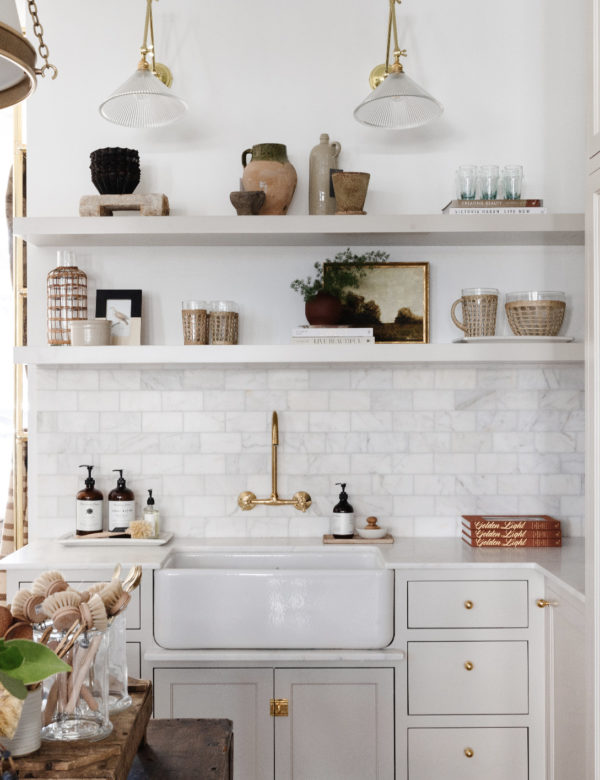
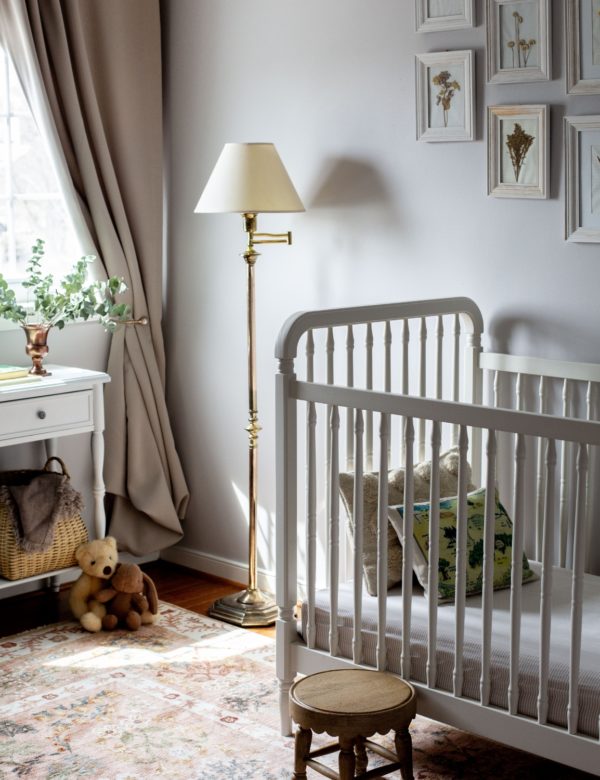
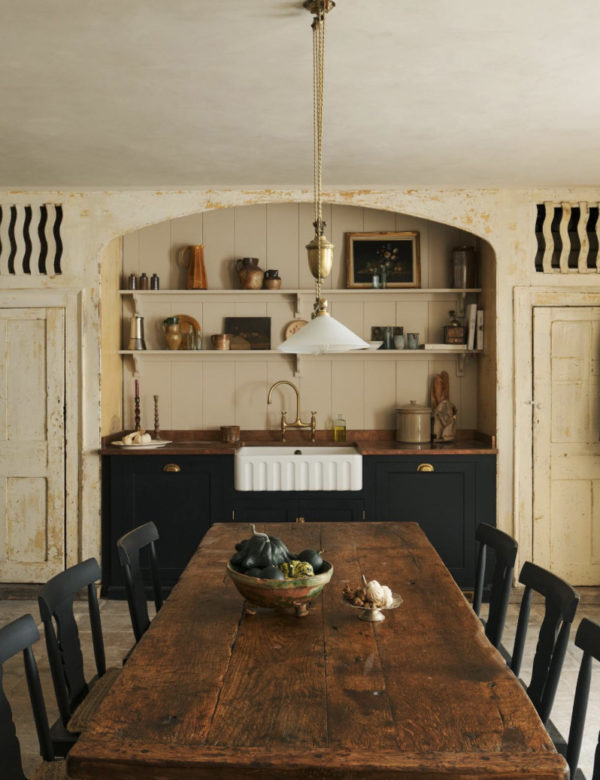
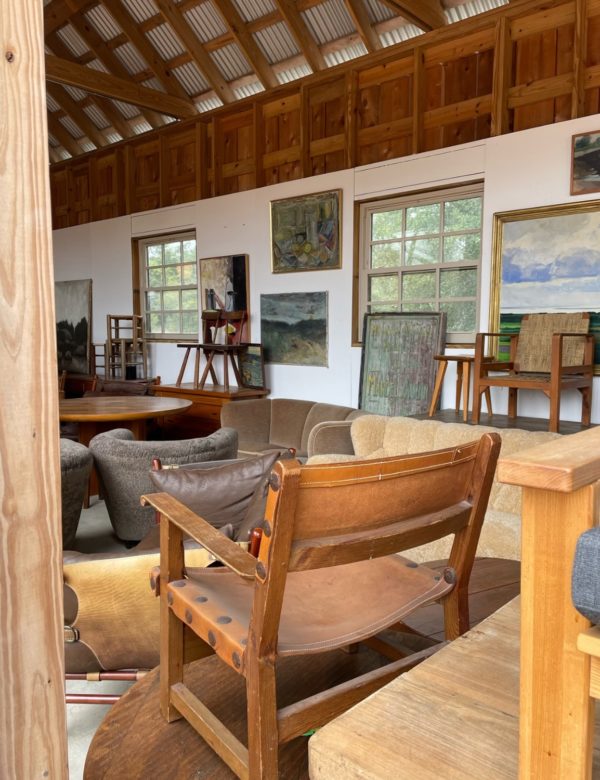
Thanks for the information!
In regards to ‘mixing metals’, would you say that stainless steel appliances count as one of the metals?
We have stainless steel appliances, will have an oil rubbed bronze hardware for cabinet doors, so we’re trying to determine what we can/should do for lighting.
You’re welcome! I definitely take it into consideration but also treat it somewhat as a neutral. If doing oil rubbed bronze hardware, try brass, nickel, or black for lighting!
It’s good to know that large lights feel more luxurious. I want new lighting in my dining room. I will start looking around for a nice LED chandelier. https://www.smartsafeelectricalnsw.com.au/energy-efficient-lighting
We are building our home on a lake. The kitchen, family and dining space are open concept. The light for the dining area is a round bamboo shade. My husband is making the pendants which will be 16 inches by 8 inches, square stained glass (clear wavy glass, black accent. I am struggling on the entry which is 12 foot ceiling and 7 feet wide. Help! Am I mixing too much? Recommendations??
Pendant lights are some of the most versatile fixtures you can incorporate into your home décor, and they have the unique ability to redefine the look and feel of a room without the need for a costly remodeling project.
It got my attention when you said that you must consider hanging chandeliers about 7’+ from the floor. As you said, you must go for a bigger chandelier when in doubt. My husband and I are planning to renovate our living room and have new lighting fixtures installed next month. We will be sure to keep your tips in mind when we visit a lighting store this weekend.
As I stood in the breathtaking penthouse I had always dreamt of, I realized that the key to creating the perfect ambiance in this luxurious space was exquisite custom glass lighting fixtures. Envisioning the grandeur and sophistication they could add, I became determined to find the best custom glass lighting to turn my penthouse into a truly extraordinary living space. I’ll consider your tip on how to make sure that each light is from the same family since the overall design of the light is the most important consideration when choosing cohesive lighting. Thanks.
what about one linear light over island instead of 3 hanging looks nice or weird? If its an all white kitchen with gold handles and faucet can the cord be black that is hanging the pendant or looks out of place
what about short ceilings do we still hang 7 from floor indining room?